
A former New Jersey lawyer has been sentenced to serve two years in federal prison after admitting he fraudulently added defendants to more than 100 asbestos lawsuits in New York.
Federal prosecutors say Arobert Tonagbanua deleted the names of actual defendants from copies of legitimately filed asbestos complaints and added the names of clients from his Haddonfield, New Jersey, firm. Prosecutors say he then sent the doctored complaints to those clients, their representatives and insurance companies.
Read more

ABC News reported on 27 March that Australia’s water consumers –just about every one of us – face an $8 billion bill to replace some 40,000kms of water pipes made with asbestos cement that are nearing the end of their useful life.
That was hardly news, as a quick Google search would have revealed; the problem has been known of years. However, as the ABC article said, these ageing pipes don’t represent a health hazard. The Foundation for Water Research reported back in 2002 that the World Health Organisation had looked at the problem in 1993, and concluded there was nothing to worry about.
Read more

Before leaving office, former Minister of Defense Moshe Ya’alon wrote to outgoing Minister Environmental Protection Avi Gabai that IDF cannot afford to halt installation of asbestos replacement parts in tanks and APCs, saying no alternative exists.
Despite the danger of being exposed to carcinogens, the former Minister of Defense Moshe Ya’alon permitted the IDF to continue to install new parts made of asbestos in tanks and armored personnel carriers (APC). Ya’alon insisted on their installation even though outgoing Minister of Environmental Protection Avi Gabai and his staff repeatedly warned that the parts can threaten the health of soldiers and their installation is illegal.
Read more

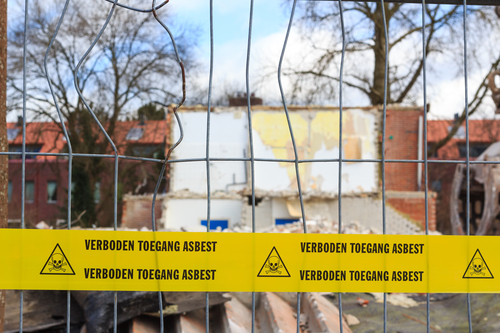 Removing asbestos from buildings is often an unnecessary expense and done in a panic, according to a document published on Thursday by Alkmaar’s mayor, two housing corporations and a university professor.
Removing asbestos from buildings is often an unnecessary expense and done in a panic, according to a document published on Thursday by Alkmaar’s mayor, two housing corporations and a university professor.
Removing asbestos on a major scale is expensive but does not generate much in terms of improved health, the writers say in their pamphlet. ‘If tenants could choose, they would rather have their home made more energy efficient or go for a new bathroom or kitchen than have asbestos removed,’ the pamphlet states.
Read more

A company that frequently finds itself targeted by asbestos attorneys is taking the reins on racketeering claims that allege those lawyers manipulated the system to unfairly drive up the costs of settlements and verdicts.
On Monday, John Crane Inc. filed lawsuits against at least two asbestos firms under the Racketeer Influenced and Corrupt Organizations Act. The basis of the claims is evidence uncovered by Garlock Sealing Technologies three years ago during its bankruptcy proceeding.
Read more

With the Toxic Substances Control Act (TSCA) reform passed into law, environmental activists are developing lists of chemicals they want banned in short order. Asbestos are near the top of the list, as easy targets. After all, it seems logical to get rid of such obvious carcinogens, but it isn’t that simple. In fact, some bans could actually undermine public health and safety.
The U.S. Environmental Protection Agency (EPA) attempted to ban all asbestos back in 1991, but a federal court overruled the agency’s proposal. That failure became a driving force for passing TSCA “reform.” Activist groups maintained that if the EPA couldn’t ban such dangerous chemicals, the law must be too weak.
Asbestos were once widely used because they have heat insulating and flame retarding effects and were beneficial in a host of building materials—including roofing, siding, insulation, and tiles—as well as machinery, from cars to spacecraft. Yet, many types have been phased out because of serious health risks. And in 1991 the EPA proposed a rule designed to ban the rest.
Read more

HIGHLIGHTS:
— Manufacturers of products that contained chrysotile asbestos won a major victory in Crane Co. v. DeLisle in September, when Florida’s Fourth District Court of Appeal reversed a verdict entered against a gasket manufacturer on grounds that the trial court had abused its discretion by admitting an expert’s testimony.
— The appellate court ordered that a verdict be directed for the defendant, where the only proof of causation was expert testimony that was not supported by scientific data and therefore should not have been admitted.
— An «expert opinion is inadmissible when the only connection between the conclusion and the existing data is the expert’s own assertions.»
— The appellate court’s detailed opinion confirmed the scrutiny that judges must apply before admitting expert testimony, and it largely discredited opinions that exposure to chrysotile causes disease in humans.
Read more

The family of a man who claimed his lung-cancer death was caused by asbestos exposure was awarded $12.5 million by a Manhattan jury — despite the fact that he smoked two packs of cigarettes a day.
The case, handled by the former law firm of disgraced ex-state Assembly Speaker Sheldon Silver, involved New Jersey resident George Cooney.
Read more

 According to the Republican presidential nominee, the anti-asbestos movement is a conspiracy rigged by the mob. Yes, the mob.
According to the Republican presidential nominee, the anti-asbestos movement is a conspiracy rigged by the mob. Yes, the mob.
For nearly five months, people around the country have been campaigning for or against Donald Trump. As one of the most polarizing presidential candidates of the century, we’ve watched debate after debate, commercial after commercial and repeatedly said, “Wow.”
Read more

West Palm Beach, FLAn asbestosis lawsuit that originally found for the plaintiff but was overturned on appeal, has seen the appellate ruling upheld after the Fourth District Court of Appeal for the State of Florida refused to revisit its ruling.
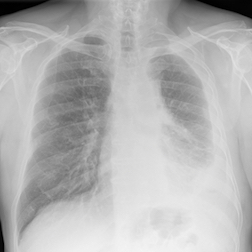
Asbestosis Lawsuit Plaintiff Hopes for a New Day with New TrialThus, any hope for asbestosis compensation for the plaintiff will hinge on the outcome of a new trial ordered for defendant R. J. Reynolds. A co-defendant, Crane Co. was granted a verdict’s entry.
The original asbestosis claim was filed by plaintiff Richard DeLisle, a laborer diagnosed with asbestos mesothelioma, a form of asbestosis disease. The plaintiff charged that his adverse health problems hinged on two scenarios: working with gaskets manufactured by Crane and alleged to contain asbestos, and a smoking habit involving Kent cigarettes, a brand manufactured by R.J. Reynolds Tobacco Co. The allegation was that Kent cigarettes were manufactured with filters that contained asbestos. DeLisle claimed in his asbestosis lawsuit that he smoked Kent brand cigarettes through the early, to mid-1950s.
Read more

We made a landmark step forward in June when reforms to the Toxic Substances Control Act (TSCA) empowered the U.S. Environmental Protection Agency (EPA) to finally regulate the most dangerous chemicals used in our nation. Since then, the primary goal of asbestos advocates was to ensure the EPA prioritized asbestos as a top ten high-risk chemical for evaluation and regulatory action.
Read more

 A ceremonial meeting of the International Alliance of Trade Union Organizations «Chrysotile» was held on the premises of the Federation of Independent Trade Unions of Russia, Moscow. The representatives of countries — members of the alliance (trade union leaders, scientists and medical professionals) took part in the event.
A ceremonial meeting of the International Alliance of Trade Union Organizations «Chrysotile» was held on the premises of the Federation of Independent Trade Unions of Russia, Moscow. The representatives of countries — members of the alliance (trade union leaders, scientists and medical professionals) took part in the event.
Read more

A Dallas asbestos firm facing a racketeering lawsuit has given up on its own case against John Crane Inc., with a California federal judge dismissing the firm’s suit in an order last week.
Judge Consuelo B. Marshall for the U.S. District Court for the Central District of California, in her two-page order Thursday, said the plaintiff, Simon Greenstone Panatier Bartlett PC, failed to file an amended complaint.
Read more

West Palm Beach — A Florida appeals court has overturned a rare $8 million verdict in an asbestos-related mesothelioma lawsuit against R.J. Reynolds Tobacco Co. and Crane Co., finding that a trial court shouldn’t have allowed jurors to hear testimony from an expert whose opinions lacked sufficient factual basis.
In an en banc opinion issued November 9, the Fourth District Court of Appeal declined to reconsider a September decision scuttling the 2013 award in favor of Richard Delisle, who claims he developed mesothelioma from smoking Kent cigarettes with asbestos-containing filters in the 1950’s. Delisle, who worked as a pipe fitter in the 1960’s, also partially attributed his asbestos exposure to gaskets manufactured by Crane Co.
Read more

On November 29, EPA announced that it will review the hazard and exposure risks caused by asbestos. Asbestos will be one of the first ten substances to be evaluated under the TSCA amendments commonly referred to as the Lautenberg Act. As we have discussed elsewhere, TSCA now requires EPA to produce a risk evaluation work plan for these substances by June 2017 and complete its evaluation within three years following. If EPA determines any of these substances pose unreasonable risks, then EPA must take further action to mitigate any risks.
Asbestos is different from the other substances on EPA’s list and poses different challenges from the others, which all are more traditional industrial chemicals. In contrast to the other chemicals, “asbestos” is not really manufactured itself even when it’s used in products because in raw form it exists in nature; has been the focus of massive product liability litigation for a generation; and presents a different set of compliance challenges for industry.
Certain types of “asbestos” — usually defined as a group of silicate minerals with fibrous properties—have historically been component parts of many industrial products because asbestos functions as an insulator. Litigation over asbestos-containing products has driven more than 100 companies bankrupt. Plaintiffs in these cases argue that asbestos in commercial products causes chronic health conditions like asbestosis and mesothelioma.
Read more

A documentary set to premiere this week scrutinizes the cottage industry of asbestos litigation.
The National Press Club will hold an in-progress showing of “Unsettled: Inside the Strange World of Asbestos Lawsuits” on Dec. 14 in Washington D.C.
The film by Paul Johnson follows a California car dealership sued for asbestos exposure. Because the dealership had never used asbestos, the defense attorney assumed the matter would be resolved quickly, but he was wrong.
“He soon found out that facts don’t always matter in the strange and secretive world of American asbestos lawsuits,” according to a promotion for the film. “In these lawsuits, it’s not always clear who is really sick, how they became sick, or if it even matters.”
Read more

 A year after his corruption conviction, ex-Assembly Speaker Sheldon Silver’s influence is still harming our courts.
A year after his corruption conviction, ex-Assembly Speaker Sheldon Silver’s influence is still harming our courts.
The American Tort Reform Foundation now ranks New York City’s Asbestos Litigation court as its No. 3 “Judicial Hellhole,” after St. Louis and the state of California.
The ATRF report notes that the court favors plaintiffs even more than it did before Silver’s fall. Defendants continue to face liability beyond their level of responsibility.
Read more

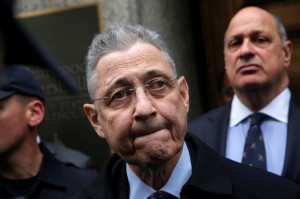 New York has cut a worm out of the Big Apple with the conviction of corrupt former Assembly Speaker Sheldon Silver, but its courts are still rotten to the core when it comes to asbestos litigation, according to a new report.
New York has cut a worm out of the Big Apple with the conviction of corrupt former Assembly Speaker Sheldon Silver, but its courts are still rotten to the core when it comes to asbestos litigation, according to a new report.
The American Tort Reform Association’s 2016 “Judicial Hellholes” report ranks New York City’s special asbestos-litigation division as the third most friendly to plaintiffs in the nation.
Read more

WEST HAVEN, CT — A 64-year-old West Haven man faces up to five years in prison after authorities say he falsely certified an undercover FBI agent for an asbestos abatement supervisor course even though the agent didn’t attend any classes, received no training and didn’t take any exams.
Guido A. Cortes-Rodriguez pleaded guilty in Hartford federal court this week to one count of making a false statement to the federal government, U.S. States Attorney Deirdre M. Daly announced in a press release.
Cortes-Rodriguez accepted $1,260 cash in payment from the agent for the course certification, according to the press release.
Read more

We have all seen those commercials for victims of mesothelioma, the lethal cancer linked to asbestos exposure, proclaiming the billions set aside for liability and urging calls to law firms. The litigation has been around for some 40 years, and the running joke is that “the future of asbestos litigation is reform, and always will be!” But is this self-propelled feedback mechanism about to end its loop?
That joke seems to apply to much of 2016. For example, 2015 ended with the headline-grabbing conviction of New York State Assembly Speaker Sheldon Silver, who was found corrupt in schemes that involved getting millions of dollars in payments from an asbestos-focused law firm as he steered mesothelioma victims their way. Their physician then received state funding backed by the Speaker.
More than a year later, Silver is still free pending appeal – a notable case in point for the concept of the wheels of justice grinding so very slowly.
Read more

WEST PALM BEACH – On Nov. 9, Florida’s Fourth District Court of Appeal refused to reconsider its Sept. 14 decision to overturn a 2013 $8 million award to Richard DeLisle, who sued multiple companies, including R.J. Reynolds Tobacco Co. and Crane Co., for his mesothelioma diagnosis.
«(Delisle claimed) he developed mesothelioma from smoking Kent cigarettes with asbestos-containing filters in the 1950s,” a Nov. 17 article from CVN said. “DeLisle, who worked as a pipe fitter in the 1960s, also partially attributed his asbestos exposure to gaskets manufactured by Crane Co.»
After the 2013 decision to award DeLisle one of the largest suits against a tobacco company and cigarette manufacturer with regards to an asbestos claim from smoking, R.J. Reynolds and Crane both submitted appeals, claiming that expert evidence provided in the 2013 trial was not valid.
Read more

Trial lawyers and Democrats team up share big bucks
Mesothelioma. For most of us, the name of this asbestos-caused lung cancer is synonymous with bad late-night TV commercials imploring those afflicted to sue for contracting the disease. And with good cause. For roughly 3,000 Americans each year, it is a death sentence.
Read more

A showdown in an Austin courtroom Tuesday may unseal the 20 year old deposition of renowned plaintiff’s attorney Russell Budd that might help lead to the exposure of the illegitimacy of thousands of asbestos lawsuits. We have all seen the ads from the most high-profile and politically connected law firms in America seeking mesothelioma plaintiffs – but now it is coming to light how these attorneys may have been engaged in corrupt conspiracies
Tort reform has always seemed a solution that can cause worse problems than it solves. True, plaintiffs’ lawyers are often predatory characters, yet they provide legal services, and some measure of purported justice, to clients of limited means. If we take away their highly lucrative contingency fees, or hurl endless obstacles to curb their avid marketing schemes, millions of Americans will simply be deprived of access to effective representation.
Read more

A Texas judge’s refusal to unseal testimony given by renowned plaintiffs attorney Russell Budd on the “Terrell memo” was a “travesty,” says the lawyer who filed the motion to unseal it on behalf of a documentary filmmaker.
Late last year, Christine Biederman, a Dallas lawyer and freelance journalist working on behalf of a documentary filmmaker, intervened in a 24-year old asbestos suit filed in Travis County, seeking to unearth the deposition of Budd, the current president of Baron & Budd — a Dallas-based law firm specializing in toxic torts.
Read more

WASHINGTON (Legal Newsline) — A bill that targets the country’s current asbestos injury compensation system has been quietly reintroduced by a Texas federal lawmaker who is hoping President Trump is more receptive than his predecessor.
U.S. Rep. Blake Farenthold, a Republican who serves on the House Judiciary Committee and the House Committee on Oversight and Government Reform, re-submitted the GOP-backed bill last week. Reps. Bob Goodlatte, R-Va., and Tom Marino, R-Pa., are listed as cosponsors.
Read more

The American Insurance Association (AIA) applauded the House Judiciary Committee’s passage of H.R. 906, the Furthering Asbestos Claims Transparency (FACT) Act. The FACT Act aims to bring needed transparency to our nation’s asbestos-related personal injury trust fund system. Sponsored, Rep. Blake Farenthold (R-TX), the FACT Act was approved by the Judiciary Committee today on a vote of 19-11.
Read more

The U.S. House Judiciary Committee has approved a bill that targets the country’s current asbestos injury compensation system and another that aims to weed out unmeritorious class action claims.
Early Wednesday, the committee passed the Furthering Asbestos Claim Transparency, or FACT, Act of 2017 by a vote of 19-11.
The panel, in a vote later in the day, passed the Fairness in Class Action Litigation Act of 2017, 19-12.
House Judiciary Chairman Bob Goodlatte, R-Va., praised the FACT Act’s approval.
Read more

Authorities have sought to reassure Cranleigh residents their drinking water remains safe despite concerns about asbestos cement water pipes.
Cranleigh Civic Society (CCS) says 29% of the village’s drinking water is supplied by pipes comprised of old asbestos cement pipes and held a public meeting to discuss the matter last month.
Both the Drinking Water Inspectorate (DWI) and Thames Water say there is no reason for concern.
Read more

WASHINGTON (Legal Newsline) — Legislation that targets the country’s current asbestos injury compensation system, requiring asbestos trust funds to disclose information on their claims, may be up for a vote this week.
According to the U.S. House of Representatives website, the Furthering Asbestos Claim Transparency, or FACT, Act is among a handful of legal reform bills that may be considered by the House this week.
U.S. Rep. Blake Farenthold, a Texas Republican who serves as vice-chairman of the Regulatory Reform, Commercial and Antitrust Law Subcommittee, reintroduced the FACT Act last month. His office could not comment on when, specifically, the legislation would see a vote.
Read more

The Attorney General of Utah has sued four of the largest asbestos bankruptcy trusts to try and force them to comply with civil investigative demands more than a dozen states have sent to the trusts, seeking information on whether they are squandering money and failing to reimburse states for Medicare and Medicaid expenditures.
Attorneys general from 13 Republican-leaning states including Utah, Michigan, Wisconsin and Kansas sent demand letters to the Armstrong World Industries, Babcock & Wilcox, DII and Owens Corning/Fibreboard bankruptcy trusts on Dec. 12. So far none have responded, Utah says in the complaint filed March 7 in state court in Salt Lake City.
Read more

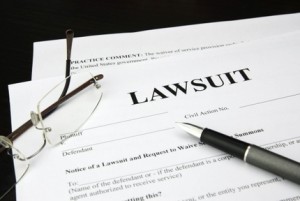 Utah’s attorney general is suing four asbestos-related trusts, including the Armstrong World Industries Inc. Asbestos Personal Injury Settlement Trust, in search of information about whether the trusts are doing enough to prevent fraudulent claims.
Utah’s attorney general is suing four asbestos-related trusts, including the Armstrong World Industries Inc. Asbestos Personal Injury Settlement Trust, in search of information about whether the trusts are doing enough to prevent fraudulent claims.
The Armstrong trust was established in 2006 as Lancaster County-based Armstrong World Industries Inc. emerged from six years of bankruptcy protection, prompted by lawsuits filed by people suffering from asbestos-related illnesses.
Officials in Utah argue that abuse of the claims process is draining away trust money intended to reimburse states for asbestos-related Medicare and Medicaid expenditures.
Read more

A bill that would revise disclosure requirements in the nation’s asbestos-related personal injury trust fund system is being hailed by its supporters for bringing much-needed transparency to the process, while opponents charge it will needlessly expose asbestos victims’ vital information.
On March 9 on a 220-201 vote, the House of Representatives passed H.R. 985, The Fairness in Class Action Litigation and Furthering Asbestos Claim Transparency Act of 2017, or FACT, which seeks, in part, to end so-called “double dipping,” where the bill’s supporters say an individual makes multiple claims against multiple asbestos trusts that were established to compensate asbestos victims.
Read more

Alabama’s Attorney General is joining colleagues from 12 other states in investigating asbestos bankruptcy trusts’ failure to pay out Medicaid payments as federal law requires.
Lawsuits have sent more than 60 manufacturers of asbestos or asbestos-containing products into bankruptcy and have paid out more than $17 billion since 2008.
Read more

 — Residents of Asbest and the International Trade Unions Movement «For Chrysotile» organized an event to draw attention to the problems of the chrysotile industry
— Residents of Asbest and the International Trade Unions Movement «For Chrysotile» organized an event to draw attention to the problems of the chrysotile industry
— Members of the construction workers trade union also joined the flash mob
One hundred bright green balloons with the words «We’re for Chrysotile!» added color to the cloudless sky accompanied by the sound of «industrial fireworks,» or explosions in the quarry of the world’s largest Bazhenovsky field of chrysotile asbestos.
Read more

As Harvard continues to renew the College’s undergraduate Houses, “several” of these decades-old buildings on campus contain asbestos, a potentially carcinogenic chemical that was once regularly used for construction.
Presence of asbestos in the Houses, though, is not a concern to administrators, who say that it is unlikely the chemical will pose any sort of health risks to students.
Last year, then-Winthrop resident Matthew W.G. Walker ’16 returned to his dorm room to find it covered in asbestos-laced dust that had fallen from the ceiling of his room. Though the discovery of asbestos kicked off a flurry of discussion about asbestos at Winthrop, many of Harvard’s older buildings contain asbestos, according to administrators.
Read more

According to an article, President Donald Trump will likely support the Asbestos FACT Act. The bill, which was introduced by U. S. Rep. Blake Farenthold (R. Texas) in February of 2017, was approved by a House Judiciary Committee as the Fairness in Class Action Legislation and Furthering Asbestos Claim Transparency Act of 2017. It repeatedly had been stalled in the legislature with a promised veto from President Barack Obama.
According to Linda Reinstein, President of the Asbestos Disease Awareness Organization, who opposes the legislation, the Act would make it more difficult for asbestos victims to be compensated. Under the bill, for claimants to receive compensation the asbestos trusts would disclose their private information to the public. This information would include things such as their names, social security numbers, exposure history, and reason for compensation. Furthermore, the bill functions retroactively.
Read more

Asbestos attorneys are feeling the earth move under their feet, they’re feeling the sky tumbling down, a-tumbling down, and they can’t get that Carole King tune out of their heads.
Next in the never-ending, ever-unsettling subconscious queue: the Fifth Dimension and the Beatles.
Read more

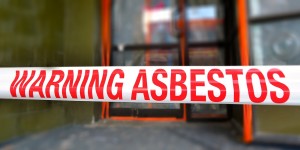 A lack of transparency between the asbestos bankruptcy trust system and the courts can lead to inflated recoveries for claimants and their lawyers, a problem that’s not only unfair to solvent companies but to future claimants as well, according to a report released today by the Illinois Civil Justice League (ICJL).
A lack of transparency between the asbestos bankruptcy trust system and the courts can lead to inflated recoveries for claimants and their lawyers, a problem that’s not only unfair to solvent companies but to future claimants as well, according to a report released today by the Illinois Civil Justice League (ICJL).
Legislation requiring reasonable disclosure of claimants’ exposure between the two systems is necessary, the report concludes.
“In recent years, a growing national debate over ‘trust transparency’ has risen to the forefront of asbestos litigation and is currently a prominent issue facing the Illinois judiciary and legislature,” it states. “The debate centers on the emergence of asbestos trusts as a substantial, alternative compensation system for asbestos claimants, and the failure of the tort and trust systems to integrate.”
Read more

The meetings of the conferences of the parties of Basel, Rotterdam, and Stockholm conventions regulating the transportation and disposal of hazardous waste, the trade of hazardous chemical substances and pesticides, and the use of persistent organic pollutants are carried out in Geneva (Switzerland) in the period April 24 — May 5.
The regulation on the turnover of chemical substances and waste is the main topic.
The use of chrysotile asbestos in construction and industry is expected to be discussed at the eighth meeting of the Conference of the Parties to the Rotterdam Convention. The anti-asbestos lobby, with the purpose of self-promotion, operating with anti-scientific facts, and the engaged environmental organizations and asbestos litigation law firms, basing their arguments on falsified data, will try to convince member states to include chrysotile asbestos into the list of severely restricted and banned chemicals and pesticides.
Read more

PHILADELPHIA (CN) – Describing a far-reaching conspiracy in asbestos litigation, an Illinois manufacturer brought a federal complaint against a Pennsylvania law firm that brags about the number of multimillion-dollar verdicts and settlements it has won for mesothelioma clients.
Shein Law Center and its principal, Benjamin Shein, are described in the May 15 complaint as having focused on asbestos cases since the firm’s founding in 1994, representing 15 to 20 personal-injury plaintiffs a year.
Shein has not returned a request for comment about the federal complaint filed against him in Philadelphia by one of his former court adversaries, John Crane Inc.
Read more

The participants of the 8th Conference of Parties to the Rotterdam Convention did not reach consensus on inclusion of chrysotile asbestos in Annex III which is the list of dangerous substances. International Alliance of Trade Union Organizations «Chrysotile» is welcoming this decision and supporting the positions of Russian Federation, Zimbabwe, India, Kyrgyzstan, Kazakhstan, Syria and Belarus that opposed listing of chrysotile asbestos and insists on providing convincing results of scientific studies.
International Alliance of Trade Union Organizations «Chrysotile» represents the interests of hundreds of thousands of workers and local communities around the world and insists that the safe use of the chrysotile is possible and justified by existing practice and scientific data.
Read more

 Asbestos trust funds set up to provide financial support for people suffering from asbestos-related illnesses are being sapped by bogus claims and frivolous lawsuits. The same shady cash grabs that are taking money from deserving asbestos victims are also threatening businesses like mine.
Asbestos trust funds set up to provide financial support for people suffering from asbestos-related illnesses are being sapped by bogus claims and frivolous lawsuits. The same shady cash grabs that are taking money from deserving asbestos victims are also threatening businesses like mine.
Ambulance-chasing lawyers are teaming up with people who may or may not have had contact with asbestos to drain the trust funds dry.
These trusts are largely financed by companies driven to bankruptcy by asbestos litigation. One day, as a result of the increasing number of phony claims, the trust funds will no longer have money to pay legitimate claimants battling mesothelioma and other asbestos-related ailments.
Read more

 There was no single cause of the tragic 24-story Grenfell Tower conflagration in London. The British newspaper The Telegraph lists eight factors, including lack of dual staircases, lack of sprinklers both outside and inside, and sub-standard fire doors—none of which at this time appear to have violated the law. But nothing contributed more to the sheer speed of the spread, blocking both exits and preventing rescues, and hence the horrific death toll, than what’s called “cladding.” That’s a covering or coating on the structure.
There was no single cause of the tragic 24-story Grenfell Tower conflagration in London. The British newspaper The Telegraph lists eight factors, including lack of dual staircases, lack of sprinklers both outside and inside, and sub-standard fire doors—none of which at this time appear to have violated the law. But nothing contributed more to the sheer speed of the spread, blocking both exits and preventing rescues, and hence the horrific death toll, than what’s called “cladding.” That’s a covering or coating on the structure.
According to The Telegraph, fire safety experts warned as much as 18 years ago that the cladding used on buildings such as Grenfell Tower—used to improve both energy efficiency and aesthetics—posed a deadly threat because it essentially turns a high-rise into a chimney, funneling the heat upwards. Why? Partly it’s “breathing space” between cladding panels allowing oxygen to enter and partly because the cladding was made of aluminum and . . . polyethylene. “Ethyl” means a petroleum byproduct. And while petroleum byproducts may be good for heating and cooling insulation, petroleum burns.
For fire protection nothing beats asbestos
One expert described Grenfell’s cladding as a candle which is sandwiched between two sheets of metal. “To see a material in 50 minutes across an entire building take flame like this and allow the flame to move so quickly—well this material is quite dangerous and clearly doesn’t perform,” said another. Eyewitnesses reported the cladding actually wafting down in flames and striking people. There is polyethylene cladding more heat resistant than Grenfell’s, but it would have been slightly more expensive (by $2.55 per square meter) and hence bypassed in favor of the cheaper materials.
Read more

ASBESTOS present in almost every school in Clydebank poses no risk to children or staff, insist council bosses.
Hundreds of older buildings throughout the country had asbestos in foundations or walls, but remain safe provided the substance is not disturbed.
A list emerged last month of 10 schools and nurseries across Clydebank and 16 in north-west Glasgow – effectively all older buildings – that still have the potentially deadly substance in them.
Read more

The carcinogenic substance is in 10% of piping, but no evidence this piping is dangerous
Asbestos can be found in approximately 6,300km of Ireland’s water mains, but there is no evidence to show that the use of this type of piping is dangerous, according to Irish Water.
Read more

With hundreds of attorneys gathered in San Francisco this week for the annual Perrin Conference “asbestos summit,” it seems a good time to note that a new documentary featuring alleged fraud with asbestos litigation earned a heated reception in Texas last week.
For trend spotters, the raucous film debate coupled with comments from the summit may hint at a softening in victims’ lawyers’ opposition to controversial efforts to increase transparency in asbestos trust funds holding billions of dollars for people who will become sick or die.
In the state that some call Ground Zero for the start of the asbestos litigation, Canadian journalist Paul Johnson offered a work-in-progress screening of his “UnSettled: Inside the Strange World of Asbestos Lawsuits” at The University of North Texas College of Law/Dallas on September 20. The after-movie discussion panel included nationally prominent asbestos trial attorneys Jeffrey Simon and Charles Siegel.
In a startling exchange, at least by asbestos-community standards, both Simon and Siegel discounted impacts of a hotly-debated recent Texas law increasing transparency for asbestos trust funds. The issue is controversial in many states and is being debated in the U.S. Congress.
Read more

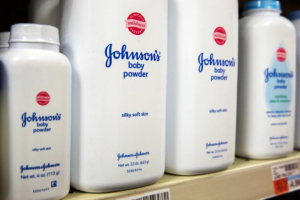 A California jury on Thursday ruled in favor of Johnson & Johnson in a lawsuit by a woman who said she developed the cancer mesothelioma after being exposed to asbestos in the company’s talc-based products including J&J’s Baby Powder.
A California jury on Thursday ruled in favor of Johnson & Johnson in a lawsuit by a woman who said she developed the cancer mesothelioma after being exposed to asbestos in the company’s talc-based products including J&J’s Baby Powder.
The Los Angeles Superior Court jury’s verdict came in the first trial centering on claims that J&J’s talc products contained asbestos. J&J is separately battling thousands of cases claiming those products can also cause ovarian cancer.
The verdict came in a lawsuit by Tina Herford, who said she developed mesothelioma after using J&J talcum powder products that her lawyers claimed contained asbestos.
Read more

South Carolinians deserve protection from frivolous class actions and asbestos lawsuits that are clogging the courts with often meritless claims. Unfortunately, the trial bar isn’t interested in reform; this type of litigation is simply too lucrative for them.
That’s why I support H.R. 985, a bill that combines the Fairness in Class Action Litigation and Furthering Asbestos Claim Transparency acts to eliminate many of the questionable tactics plaintiffs’ lawyers use to pursue class action lawsuits. Many of these dubious suits are based upon flimsy evidence, designed mainly to generate a settlement and a fee, where lawyers are flooding the system with advertising-driven claims that deprive legitimate victims of the funding due them.
H.R. 985 passed the U.S. House of Representatives in March — thanks in part to the leadership efforts of reform-minded members like Rep. Trey Gowdy, R-Greenville — and is awaiting action in the Senate. In fact, the Senate Judiciary Committee, of which U.S. Sen. Lindsey Graham is a member, just held a hearing on this issue recently.
Read more

As 2018 gains full speed, it’s time for my annual look at trends in the nation’s longest-running personal injury litigation – asbestos. You may have peripheral awareness of it due to those “if you or a loved one has been diagnosed with mesothelioma” ads, but its reach is beyond those sound bites playing on loop.
Actually, asbestos lawsuits are the nation’s longest-running personal injury litigation and have driven nearly 100 companies into a special form of banktruptcy, where trust funds are set up to pay future liabilities. Those funds have become controversial and, in 2017, more than a dozen state attorneys general launched an investigation into whether asbestos trusts were skipping required payments to Medicaid or other agencies providing health care to asbestos victims. (When victims receive compensation for asbestos injuries, some of the money may be owed to repay agencies that provided health care, like Medicaid and veteran’s hospitals.)
Read more

The Missouri House has passed legislation to change the rules for lawsuits over asbestos exposure, an effort praised by supporters as a way to stop plaintiffs from being overcompensated but criticized by others as limiting access to justice for those with illnesses such as mesothelioma.
The measure, approved 96-48, would require plaintiffs alleging harm from asbestos to file claims against every potentially liable company or bankrupt company’s trust fund at once. Currently, those injured from the carcinogen could win compensation from one company and then, at a later time pursue another claim against a different defendant.
Read more

Asbestos — the heat-resistant, naturally occurring silicate mineral — disappeared from the manufacturing marketplace over 40 years ago. In those four decades, litigation involving asbestos has been as impervious to resolution as the mineral itself is to high temperatures. When we’ve asked mass-tort litigators «what’s the next asbestos?» some have answered — not entirely in jest — «asbestos».
The reasons for asbestos litigation’s endurance are many, but defendants, judges, and public officials have started to spotlight the role of bankruptcy trusts and plaintiffs’ lawyers’ use of them as both shield and sword. Numerous voices, including state attorneys general and Members of Congress, have called on the U.S. Department of Justice (DOJ) to investigate misconduct and potential fraud. DOJ has a number of potent oversight and enforcement options at its disposal, some of which are discussed below.
Distrust of the Trusts
Forty years of litigation drove companies that mined and sold asbestos for industrial and other uses out of business. Over 60 bankrupt businesses set up trusts meant to compensate individuals who contracted mesothelioma or other diseases from asbestos exposure. Lawyers who represent asbestos plaintiffs dominate the advisory committees of these trusts. Litigation-reform proponents justifiably complain that the trusts dole out payments on minimal proof of exposure and fail to police inconsistent claims that are made to multiple trusts.
Bankruptcy trusts operate parallel to, but independent from, the civil justice system. Plaintiffs’ lawyers can thus file claims with the trusts and also sue solvent defendants that manufactured products or component parts that contained asbestos (e.g. gaskets, brakes). In civil asbestos litigation, the source of a plaintiff’s asbestos exposure often determines the outcome. The plaintiffs’ lawyers know if their clients had additional or different exposures, but the defendants are routinely left in the dark because the lawyer-run bankruptcy trusts block access to claims information.
The «ah ha» moment for litigation-reform proponents and solvent defendants occurred during the 2013 creation of an asbestos bankruptcy trust for Garlock Sealing Technologies. Plaintiffs’ lawyers demanded the trust provide $1.3 billion to cover injury claims, but the presiding federal bankruptcy judge was skeptical. He allowed Garlock to conduct discovery on 15 settlements into which it had entered. Discovery revealed that the plaintiffs had withheld exposure evidence in all 15 settlements and also delayed filing claims with bankruptcy trusts until after resolving suits against Garlock.
The bankruptcy court released a breathtaking opinion on the Garlock matter in early 2014 that documented a «startling pattern of misrepresentation.» It concluded that Garlock’s «last ten years of its participation in the tort system was infected by the manipulation of exposure evidence by plaintiffs and their lawyers.” The court decided that Garlock should contribute $125 million, not $1.3 billion to the trust.
In re Garlock emboldened common asbestos-litigation defendants and civil-justice reformers, and its impact continues to reverberate to this day.
Possible Federal Action
In each session since 2014, the U.S. House of Representatives has passed legislation requiring asbestos bankruptcy trust reporting. The Senate has never passed its version of the bill. The lack of a viable legislative solution has inspired serious discussion about DOJ action.
Civil RICO. One option would be for the U.S. to investigate and bring civil racketeering charges under the Racketeer Influenced and Corrupt Organization Act (RICO) against lawyers and law firms that have committed fraud in their conduct of asbestos litigation. Prior to filing an action, prosecutors could do extensive discovery through civil investigative demands (CID). RICO accords federal prosecutors nationwide service of process, as well as powerful financial and equitable remedies such as forfeiture, restitution, and disgorgement.
Several victims of the misconduct unveiled in In re Garlock have filed private RICO actions. Just prior to the January 2014 bankruptcy court’s ruling, Garlock filed a civil RICO action against some of the firms involved in the 15 settled liability actions. That suit survived a motion to dismiss in September 2015, with the court ruling that Garlock «successfully alleges that Defendants engaged in a wide-ranging, systematic, and well-concealed fraud designed to suppress evidence and inflate settlement values for mesothelioma claims.» Garlock settled the suit for $358 million, and the complaints as well as Garlock’s evidence have since been unsealed.
In June 2016, John Crane filed civil RICO actions citing evidence of a scheme to commit fraud and obstruct justice gained from the Garlock actions. A federal trial judge held that John Crane lacked jurisdiction to file the claims, a decision that the plaintiff has appealed to the U.S. Court of Appeals for the Seventh Circuit.
Federal False Claims Act. A November 6, 2017 letter from 6 state attorneys general to Attorney General Jeff Sessions urged DOJ to consider pursuing action under the False Claims Act (FCA) «to put an end to asbestos trusts’ pattern of obstructionism.» The letter explained that Utah Attorney General Sean Reyes had issued CIDs to several asbestos trusts seeking information that might support a state false claims action for failing to reimburse Medicaid. The trusts refused to comply and General Reyes asked a state court to enforce the CIDs. The court held the state lacked jurisdiction and dismissed the complaint. Utah has appealed that ruling.
In a confirmation hearing and in follow-up written questions, members of the Senate Judiciary Committee asked Civil Division Assistant Attorney General-Designee Chad Readler about the FCA and asbestos litigation. Mr. Readler acknowledged the issues and the possible use of the FCA, stating that fraud in asbestos trusts was «one of the areas I want to focus on.» As with a possible RICO action, DOJ could first investigate possible FCA violations by issuing CIDs.
Failure of the trusts to reimburse Medicare for its payment of medical care for an asbestos claimant’s alleged injuries could give rise to FCA liability. As with the RICO claims discussed above, a private legal action might show the way. Several Medicare Advantage plans, relying upon information from the Garlock matter, have filed suit under the Medicare Secondary Payer Act seeking reimbursement from law firms that secured trust disbursements for clients. Humana, United Healthcare, and Aetna assert that they covered medical expenses for those who received asbestos trust money.
The U.S. Trustee Program. As discussed in a December 2017 WLF Legal Opinion Letter, the Justice Department houses the U.S. Trustee Program, an office that protects the integrity of the U.S. bankruptcy system. In their letter to the Attorney General, the 6 state attorneys general suggested that the U.S. Trustee «could immediately move to require disclosures from the trusts.» WLF’s paper supported that conclusion.
The U.S. Trustee acknowledged to the House Judiciary Committee that without an «independent policeman,» there are «risks for abuse» in asbestos trusts. The office’s director, however, stated that the U.S. Trustee lacks «significant jurisdiction [over such trusts] post-confirmation.» Perhaps motivated by this belief, three Senators have introduced legislation that in part confirms the U.S. Trustee’s authority.
If the U.S. Trustee is hesitant to examine asbestos bankruptcy trusts in the abstract, a recent court decision may create an opportunity for a targeted action. The U.S. District Court for the District of Delaware has affirmed a federal bankruptcy judge’s decision to deny Ford and Honeywell unlimited access to exhibits from nine asbestos bankruptcy matters. If the companies appeal that outcome to the Third Circuit, the U.S. Trustee could contemplate a role in the case.
Action in the Public Interest
Asbestos litigation has grown into a multi-billion dollar industry. Though the plaintiffs’ bar clamors for oversight of every other successful American industry, it wants a hands-off approach to asbestos litigation. The reason is obvious: they’re the only ones that really profit. Americans as consumers, employees, shareholders, and pensioners lose when companies spend millions to defend themselves or go out of business. Even the asbestos litigation industry’s supposed beneficiaries—asbestos-exposure sufferers—lose when uninjured parties siphon off funds from the bankruptcy trusts.
This DOJ has been rightfully circumspect in using its broad authority. After fulling assessing the situation and its options, we’re confident that the leadership will see the public interest in its taking action.

OPINION – L’édition du 23 mai du Journal de Québec et du Journal de Montréal nous informait de l’inquiétude des médecins devant le retour de l’amiante au Québec. Cet article reprenait les demi-vérités et les projections sans véritables fondements qui foisonnent dans le dossier de l’amiante pour ameuter la population à la suite du développement de quatre projets impliquant l’exploitation de rejets miniers serpentiniques à Asbestos et Thetford Mines.
Je crois que cette charge, digne de Don Quichotte, demande un rappel de certaines notions de base en ce qui concerne l’amiante, notions qui pourront mettre les choses dans leur vraie perspective.
Read more

 In the Trump administration, at least, the government will no longer look the other way as asbestos lawyers negotiate lenient terms that make it easy for their current clients to get money at the expense of future claimants and federal entitlement programs.
In the Trump administration, at least, the government will no longer look the other way as asbestos lawyers negotiate lenient terms that make it easy for their current clients to get money at the expense of future claimants and federal entitlement programs.
The Justice Department last week used a law guaranteeing repayment of Medicare and Medicaid expenses to lay down a far more expansive marker in front of the lawyers who negotiate asbestos bankruptcy trusts, which are created for companies that would not be able to survive asbestos liability in civil courts.
The government’s unusually blunt statement of interest in the Kaiser Gypsum bankruptcy, long before any plan of reorganization has been approved, warns lawyers against including terms that make it hard to ferret out fraud and abuse, including confidentiality requirements that make it impossible to determine how much claimants have been paid and the basis for their claims.
Read more

The Vice Minister of Health (VMH) of the Russian Federation, Sergey A. Krayevoy yesterday (27) emphasised that the Russian produced asbestos posed no threat of cancer. Responding to questions from the Media regarding the controversy of asbestos and its carcinogenic features, Krayevoy said that what should be questioned was as to which type of asbestos fibre caused cancer.
Read more

International Alliance of Trade Union Organizations «Chrysotile» has drawn attention to the results of the research conducted by John A. Hoskins and published on 15 December 2018 in «Toxicology and Applied Pharmacology». The scientist wanted to understand the reasons behind the Grenfell Tower fire, which took place in a London tower block and killed 71 people, and aimed to find out how it could have been avoided.
Read more

International Alliance of Trade Union Organizations «Chrysotile» supports the decision of the Board of the Eurasian Economic Commission (EEC), the regulatory body of the Eurasian Economic Union (EEU), to recommend that member countries (EEU unites Armenia, Belarus, Kazakhstan, Kyrgyzstan and Russia) develop a unified position on international trade and the use of chrysotile asbestos.
Read more

The official study by the Russian Federal Service for Surveillance on Consumer Rights Protection and Human Wellbeing (Rospotrebnadzor) based on the data of 2018 has not revealed any cases of occupational diseases at the Uralasbest plant, which is confirmed by an official study document recently published on the Rosportrebnadzor website.
Rospotrebnadzor experts have reviewed the statistics of all enterprises of the Sverdlovsk region for 9 months of 2019, and have concluded that the level of occupational diseases in the region is steadily decreasing. Manufacturing industry enterprises have the highest number of occupational disease cases. “The smelting industry takes the first place in the number of occupational diseases (65.2%); the second place is divided between production of other non-metallic products, repair and installation of machinery and equipment, production of other vehicles and equipment (8.6% each); production of finished metal products and manufacturing of machinery and equipment hold the third place (4.3% each).”
The document does not mention the asbestos mining industry, for a good reason. The Uralasbest integrated plant is an industrial giant located near the monocity of Asbest. The plant continuously introduces modern technologies to ensure the safety of its employees in the workplace as part of its policy of controlled use of chrysotile. Workers who come into contact with the mineral in some form are provided with personal protective equipment. The workplaces are equipped with powerful purification systems and the plant ensures regular full medical examinations for its employees. No cases of occupational diseases were recorded at the plant in 2018.
The similar situation is observed with asbestos-related diseases, that is, no such diseases were detected among the residents of Asbest and its vicinity. This point needs to be especially emphasised, considering the massive campaign that has been running for the past time, aiming to discredit and subsequently ban the use of the chrysotile. The main argument of the opponents is their blanket accusation of the chrysotile industry of high occupational disease rate and environmental pollution.
The study conducted by Rospotrebnadzor experts mentions that the main causes of occupational diseases are the use of outdated equipment and negligence in the workplace. At Uralasbest, the zero occupational disease statistics is due to the high professionalism of its workers. Uralasbest imposes the same strict standards of quality and safety both on the manufactured products and on disposal of industrial waste.

Behind the scenes: how Russia and Europe are fighting for asbestos
Trade wars are an ancient and glorious tradition. When Caesar set off to conquer Egypt, he first of all intended to block the flow of grain from the largest Mediterranean granary with one blow, thereby seriously shaking the position of his rivals in the Eternal City, which at that time was critically dependent on food supplies. The ability to impose sanctions, gain control over trade and production chains provides no less reliable victory than the clang of swords or the crash of guns. During the Livonian War, Ivan the Terrible had to skillfully conduct diplomatic and trade policies so that Western merchants wanted to risk their heads in spite of the prohibitions of the «enlightened» states and brought weapons, bronze and other supplies necessary for military affairs to Russia. In modernity, nothing has changed, however, it has acquired slightly different forms.
For example, since the 1970-ies between the collegial West, expressed by the countries of the European Union and part of the US power circles, and Russia (then the USSR) and the countries of the Pacific region, there has been a protracted struggle for the industrial use of a mineral called asbestos. Western countries are attempting to limit the use of «mountain flax» (as they used to call asbestos in ancient times for its fibrous structure), and Russia, the countries of the CIS and the Asia-Pacific region defend the right to use it. In the fight against the use of asbestos, representatives of transnational corporations and activists resort to a variety of methods — from lobbying for interests to direct pressure on the leadership of entire countries. For the most part, this «trade war» is waged secretly, and the layman is assigned the role of an involuntary soldier, because they try to manipulate his opinion in order to provoke indignation and induce him to vote for certain actions of the authorities. However, first things first.
Asbestos is the collective name of a number of minerals from the group of silicates, which consist of the finest fibers. It differs not only by its unique natural properties (it does not burn, does not melt and is extremely durable), but also has a convenient structure — asbestos fibers can be used to make fabric, as if from wool or linen, only much more durable, reinforced with mineral fibers. Throughout the first half of the 20th century, asbestos was considered a “miracle mineral” that was used almost everywhere — from shipbuilding to housing and the production of hats. And all was well until, in the 1970’s, asbestos mining companies in the USA and Western Europe became victims of anti-asbestos hysteria. A reasonable question arises — why? Where did all these scandalous stories with injured people come from? The answer is simple: asbestos, asbestos is different.
Asbestos is the collective name for a number of minerals. In the West, amphibole asbestos was mainly used, and most of the proven cases of the disease are associated with him or his “immediate family”. In Russia, chrysotile asbestos is traditionally mined, which has other properties — in particular, due to the short fiber length (less than 0,5 microns), it is completely excreted from the body in 15 days and cannot harm the human body (according to Exploration Biopersistance of Chrysotile Fibers by David M. Bernstein, Rick Rogers and Paul Smith). Another study on the effect of using brake pads with chrysotile asbestos linings, notesthat work with chrysotile-containing materials is completely safe while observing the standards for protecting workers. As for the World Health Organization, then in 2007, WHO опубликовала the brochure “Workers’ Health: A Global Plan of Action for 2008-2017”, in the 10 paragraph of which indicates that the control of asbestos-related diseases will take into account “A differentiated approach to regulating its various forms, relevant international legal documents and the latest evidence for effective activities”. De facto, this means that WHO not only recognizes the differences between amphibole and chrysotile asbestos, but also undertakes to take into account all the scientific studies published on this topic.
But why, then, lobby groups in the US and the European Union are trying to push through the ban on the use of all types of asbestos? The answer is simple. After the 1970’s, manufacturers of synthetic asbestos analogues appeared on the horse and did not want to share the market with chrysotile, which is both cheaper and better than their products. Western companies cannot win in fair competition, but try to impose their will by force — as much as you like. As a result, heartbreaking stories about the dangers of asbestos, high-profile statements by politicians, and many other tricks designed to discredit the mineral regularly appear in the media.
However, in Russia, Kazakhstan and a number of other countries, the production of chrysotile asbestos not only continues, but also develops. According to the official position of the Russian Federation regarding asbestos, the controlled use of the mineral is not hazardous to health, including slate, since the cement matrix excludes the possibility of release of free asbestos fibers into the atmosphere.
The global market for the use of the mineral is expanding; new products are created on its basis. Products based on chrysotile asbestos are used by countries whose population exceeds 2 / 3 of the world’s population. For these countries, chrysotile asbestos is a source of affordable drinking water, the ability to provide millions of families with a reliable and, most importantly, affordable roof over their heads is a real way to improve the quality of life of people.
However, the trade war continues. The fate of thousands of people depends on its outcome. Only in Russia, two cities with a population of several tens of thousands of people live thanks to the chrysotile industry (the monocities of Yasny and Asbest, located next to mining plants), not to mention the numerous factories, processing shops and other enterprises. In total, more than 50 thousand people are engaged in mineral processing in Russia.
Chrysotile asbestos is no less important for importers — it is in many ways the only source of cheap and high-quality building materials. Mineral-based products can improve the quality of life of the population in the countries of Southeast Asia and Africa. The damage caused by the prohibition of chrysotile can cause a huge blow to the social life of people, who make up two-thirds of the world’s population. However, who cares when a lot of money is at stake?

MOSCOW, Dec. 17, 2019 /PRNewswire/ — The chrysotile industry in Russia is 300 years old, and dates back to the time of Peter the Great. Obviously, now there are no witnesses to the industry’s first steps in the XVIII century, but those who participated in the events of the 1960s, when the active construction of the production lines of the Uralasbest mining complex began, are still with us. On November 29, 2019, employees of the Railway Transport Directorate of the complex congratulated labour veteran Minnekhasiba Gilvanova on her 90th birthday.
For Uralasbest, Ms Gilvanova’s story is the rule rather than the exception. In 2018, the plant published the book «80+. A Generation of Winners», which talks about the oldest veterans of the chrysotile industry, who worked for the benefit of future generations. For example, Viktor Stepanov worked at the complex for 25 years. Like many of his colleagues, he is a member of the Uralasbest Veterans’ Council, whose members are more than 6,000 retired employees of the complex. More than 300 of them helped defend their Motherland from Fascism by fighting during the Great Patriotic War or as home front workers, and 124 veterans are older than 90.
It’s no secret that people these days like to talk about the harm caused by asbestos, without distinguishing between the amphibole group and chrysotile. But there is a key difference: chrysotile when safe controlled use rule applied is safe, and the best proof of this is the life and health of the industry’s veterans. The retirees participate in demonstrations, are an example for young people, and actively participate in the life of their hometown and of the plant where they used to work. They know that, when handling chrysotile, compliance with labour discipline, a correct organisation of workplace safety, and measures aimed at protecting employee health create a safe work environment, in both the XX and the XXI centuries. Upon compliance with the production technology, chrysotile is safe for consumers as well.
This is why veterans of the chrysotile industry defend the complex and the domestic industry as a whole: they built it with their own hands, and know more than anyone else about it. After all, their lives are one of the most convincing arguments in favour of using asbestos: it gave them a meaningful job, a dignified old age and respect.

What those donors understand is that a President Biden would nominate judges who are favorably disposed, or at least not hostile.
A Joe Biden presidency would be a bonanza for plaintiff’s lawyers.
After his strong performance in the South Carolina Democratic primary and on Super Tuesday, Biden has been consolidating support among a wide range of key Democratic constituencies. But the trial lawyers have been backing him since before it became trendy.
Four Biden fundraising events tell the story.
On May 21, 2019, Biden had a fundraiser at a home of Orlando, Fla., lawyer John Morgan. Orlando magazine reported the event raised $1.7 million and reports that Morgan owns, with his wife, the plaintiff’s law firm Morgan & Morgan, and also «ClassAction.com; Abogados.com (the Spanish word for attorney is abogado); and Litify, a software management system for law firms.»
On June 18, 2019, Biden held a fundraiser at what a pool report described as «a tent on a balcony-like outside area adjacent to the law offices of Weitz and Luxenberg P.C. in Manhattan.»
My review of Federal Election Commission records discloses about 50 contributions to the Biden presidential campaign from Weitz & Luxenberg employees, totaling $97,400. Most of the contributions are from lawyers, but an accountant and the firm’s information technology director also kicked in. Many of the contributions are grouped around the date of the June 18 event.
Weitz & Luxenberg specializes in asbestos lawsuits. The firm paid former New York State assembly speaker Sheldon Silver millions of dollars to refer cases to it in a scheme that yielded federal criminal charges and a conviction of Silver that was eventually overturned by an appeals court. Weitz & Luxenberg was not charged in the case. The firm’s website boasts that the firm’s lawyers have obtained $8.5 billion in asbestos verdicts; they are also pursuing artificial hip-makers and Monsanto’s Roundup herbicide.
On Monday, December 2, 2019, Biden had another fundraiser with trial lawyers, this time about 70 of them at the Union League Club in Chicago. Among the hosts, according to a pool report, was lawyer John Simmons. Lawyers at his firm, Simmons Hanly Conroy, have donated $119,100 to Biden’s presidential campaign, according to Federal Election Commission records. That firm, too, specializes in asbestos litigation.
On February 24, 2020, Biden had a fundraiser at the Mount Pleasant, S.C., home of Lisa and Joe Rice. Joe Rice is a co-founder of the plaintiff’s law firm Motley Rice.
My review of Federal Election Commission records discloses about 30 contributions to the Biden presidential campaign from Motley Rice employees, totaling $59,850. Most of the donations are from lawyers, though a paralegal and a «law intern» also gave money to Biden. Motley Rice also is involved in Roundup litigation, as well as in cases about breast implants, hernia mesh, Takata airbags, Johnson & Johnson’s baby power, and prescription opioids.
OpenSecrets.org, a website that tracks campaign finance, lists the two plaintiff’s firms, Morgan & Morgan and Simmons Hanly Conroy, as Biden’s top two contributors for the period 1989 to 2020.
Biden’s relationship with the tort bar goes back decades. The Los Angeles Times reported in 2008 that Simmons Hanley Conroy, then known as SimmonsCooper, offered to invest $2 million to help Biden’s son Hunter and Biden’s brother James buy a hedge fund company.
Joe Biden, a lawyer himself, long served on the Senate Judiciary Committee, where he was in a position to craft legislation and to vote on judicial nominations that affected the profits of these law firms.
Presidential candidate Biden professes to be for «a constitutional amendment to entirely eliminate private dollars from our federal elections,» to «reduce the corrupting influence of money in politics.» I disagree with Biden’s stated position. I favor protecting the rights of trial lawyers—just like corporate lawyers and executives and any other American—to participate in the political process by making campaign contributions.
Voters considering Biden, though, will want to be clear-eyed about what all this means. What the trial-lawyer donors understand is that a President Biden would nominate judges who are favorably disposed, or at least not hostile. Biden would also pursue a policy and legislative agenda favorable to plaintiff-lawyer interests.
What might that look like?
There’s a contrarian conservative or libertarian case for privatizing some policy decisions into product liability law. Rather than officially banning guns or ammunition, this line of thought goes, make the manufacturers liable for civil damages in school shootings and other violent crimes. Rather than outright banning fossil fuels, make the oil companies or the automakers liable for the climate consequences of emissions. The trial lawyers and the courts will take care of the rest.
I’m not advocating this line of thought, just describing it. And venturing this prediction: if Biden does wind up in the White House, various other parts of the private economy may suffer in a variety of ways, but it sure will be good for the legal business.

here are more than 5,100 kilometres of asbestos water pipes in Ireland.
The substance can cause cancer if inhaled, but Irish Water denies that is the case if you consume it through drinking-water.
Asbestos cement was commonly used to build truck mains from the 1950s to the 1980s, but it has not been used for that purpose in Ireland since that period.
But according to details released under the Freedom of Information, there are still 5,122 kilometres of asbestos cement water mains throughout Ireland.
22% of it is in Cork, which is nearly double the amount in greater Dublin.
Other counties with significant amounts are Donegal, Tipperary and Kerry.
Irish Water was unable to say how many of the pipes had burst in recent years.
But Jack O’Sullivan, an environmental scientist, is calling for the utility to make sure they are in good order.
“Those asbestos pipes, to my understanding, would be between 50 and 70 years old,” he said.
“And that’s a long age.”
Mr O’Sullivan said that the “most important thing” Irish Water should do is to “carry out a risk assessment of the structural integrity of those pipes”.
But Irish Water denies asbestos water mains are harmful to people’s health.
It points out the World Health Organisation says asbestos can cause cancer if inhaled – but not if ingested through drinking-water.

Tendai Mugabe Senior Reporter
All donations being made by corporates and individuals towards the fight against Covid-19 will be put to good use and accounted for, President Mnangagwa has said.
The President thanked Zimbabweans for their overwhelming response to his call for support in the fight against the spread of Covid-19.
He made these remarks at State House where he received donations in cash and kind from various corporates and individuals at State House last night.
TelOne and NetOne donated $10 million while the Transport Association of Zimbabwe came forward with $11 800 000 that will be disbursed in tranches until July.
Angel of Hope Foundation, whose patron is First Lady Amai Auxilia Mnangagwa, donated 50 000 face masks, 1 519 medical protective suits, and 1 000 units of medical goggles.
Another donation from other companies to Angel of Hope Foundation that were presented to President Mnangagwa included 500 face shields, 500 disposable caps, 1 000 protective suits, 20 surgical masks, 2 800 N95 masks and 1 500 goggles.
Turnall Asbestos donated 600 roofing sheets and Green Fuel donated 3 750 litres of sanitisers adding that it targets to make a donation of 50 000 litres.
Dairiboard Zimbabwe made a cash donation of $1 million, products worth $3 million and 30 000kg of maize meal to help those in the front line.
King David Global, which has some links with a South African firm donated one million face masks, and other materials worth US$2 million and Winfounders donated 40 aprons and cups.
President Mnangagwa said: “Let me assure you that the donations you have made, in the same manner the donations already made by others before you, and those who are yet to come, we assure the nation and the donors that your donations will be put to max-
imum use transparently with accountability. May I on behalf of Government and my own behalf, sincerely and deeply thank you individually and collectively for the response you have made as Zimbabweans and others who are non-citizens, coming forward with resources both in cash and kind to mitigate the threat on our people by this pandemic, Covod-19.
“I will single out the manpower donation by the nurses, indeed I am happy that you don’t have the strike sentiment now. You are willing to join the rest of the country to fight and keep at bay this pandemic. On our part, both at Government and private sector and the entire nation, will do our best to ensure that as you are our frontline fighters in this pandemic you receive; you are supported with all the PPEs you require. Of course we don’t have all the resources to give all that you need but we are going to do our best and the entire country has come forward to assist us to mobilise the resources that you need in the frontline to fight this pandemic.”
The President said he was aware that there were people across the country who were keen to volunteer to assist the health personnel.
He said these people would be appropriately allocated their areas of competences.
“Thank you very much Zimbabweans for the solidarity that you are showing in the fight against this pandemic, which has no borders,” said the President.
A representative of the Zimbabwe Nurses Association Mr Enock Dombo said they were donating their labour as the frontline soldiers and assured President Mnangagwa that they would do everything to save lives.
“We will be together in this fight and I assure you that with this Covid-19, we have committed to be in full support of Government efforts,” said Mr Dombo.
He appealed to President Mnangagwa to ensure that all the donations reached the front line health workers who are putting their lives at risk to save people’s lives.
Vice President Mohadi who is the chairperson of the Covid-19 Inter-ministerial Taskforce committee and several cabinet ministers attended the event.

Double Dipper Steven Kazan’s Recent Filing Provides More Evidence the Western Asbestos-Western MacArthur Trial (Chapter 11 Case No. 02-46284) was a Complete Sham
Everyone knows it. The Western Asbestos/MacArthur Trial was a complete sham with the Judge (really) an “insider” who was guaranteed Asbestos Trustee positions “post trial”. But even worse, the evidence brought forward by Steven Kazan and Alan Brayton in that Trial was fabricated, inflated, and pure fraud. And a recent filing by Double Dipper Steven Kazan proves it.
Here’s the filing: Darden v. WAST – Complaint for Dec. Relief (Rejected Kazan Meso) – N.D. Cal BK 5-26-20
To understand the nature of the mass Kazan fraud, you need to understand the underlying trial in which Western Asbestos liabilities were ultimately determined (with Ken Kawaichi was Kazan’s hand picked Judge…). Thousands of asbestos disease cases were at issue with Kazan and Brayton alleging that each was worth hundreds of thousands, if not millions of dollars. Under the weight of potential liability (due to Kazan/Brayton fraud), Western Asbestos (the insurance companies) settled the lawsuit for nearly $2 Billion dollars. KEY DISCUSSSION OF WESTERN TRUST HISTORY. Many knew there was mass fraud in this Trial before Ken Kawaichi. But it didn’t matter. With Kawaichi making every ruling for Kazan, a massive settlement was reached. Kazan pocketed at least $100 million (including millions in ‘sham’ fees).
So what does the recent Darden v. WAST filing have to do the Western Asbestos/Western MacArthur Trial? In paragraph 12 of the attached file, it says that “In 1986, Eddie (Darden) settled his asbestos lawsuit again Western MacArthur Company. In exchange for $1,300.00 (one thousand three hundred). “ Eddie Darden had asbestosis. In the Western Asbestos/MacArthur Trial, there were thousands of Claimants with Asbestosis. What did Kazan (and Brayton) represent to the Court and Defendants that each of the Asbestosis cases against Western Asbestos was worth? At least $50,000.00 per claim. Kazan had recently settled as Asbestosis case (Darden) with Western Asbestos for $1,300.00 – yet in this ‘big’ Trial, Kazan represented that each of ‘these’ thousands of Asbestosis cases were worth $50,000. The insurance company ultimately settled with Western Asbestos using $20,000 and $50,000 as the “sample” settlement for the thousands of Asbestosis claims without ever knowing that Kazan was actually settling the claims for $1,300. Simple math makes clear this is no less than $35,000,000 difference (probably more)….Back that up with 100’s of “Fraudulent” Default Judgments by Kazan and Brayton in the Western Trial (worth hundreds of millions – but represented as “Billions”…) and the Corruption is obvious. Kazan is a fraud. So is Alan Brayton.
Double Dipping: Kazan’s recent filing also makes clear that he’s the “King of Double Dipping”. Kazan gets “full value” for his mesothelioma cases in the 3rd party Lawsuit (by going to Court). And then, Kazan “Double Dips” by getting grossly overinflated moneys from the Asbestos Trusts (i.e. Double Dipping).
The recent filing confirms Kazan Double Dipping – Kazan got full value in the Darden case in the litigated portion. Full value (Kazan is also an insider dealer on many Asbestos Trusts and gets 10x identical claims by other lawyers). by most estimates, the Darden family has already collected $8 million dollars or so. But that wasn’t enough for greedy Kazan. Kazan wants to ‘rob” Asbestos Trusts too. As a result, Kazan “Double Dips…..”…such as this recent filing….Darden v. WAST – Complaint for Dec. Relief (Rejected Kazan Meso) – N.D. Cal BK 5-26-20
One good note – If there is any good news from the above – it is quite shocking that the this Darden mesothelioma claim wasn’t already paid by the Western Asbestos Settlement Trust. Had (the now retired to escape criminal liability) Stephen Snyder (former Chairman of the Trustees) been at the Trusts – Kazan would have been paid on this Darden claim long, long ago — and paid HUGE money. Snyder – a pure criminal – misappropriated Millions of Dollars to Kazan. Maybe the new Executive Director is actually doing his job (unlike the criminal Snyder).
However, as Laura Paul still works (steals) from the Western Settlement Trust – there is no doubt bad faith and fraud still taking place….(Brayton claims)….Proof – Kazan Reaping Billions from Trusts
If you are a victim of Mesothelioma or Lung Cancer – Do Not Hire Steven Kazan or his Law Firm KazanMcClain
Do Not Hire This Fraud — Steven Kazan DO NOT HIRE OR RETAIN STEVEN KAZAN or KAZAN MCCLAIN – HE’S A COMPLETE FRAUD
If you are an Asbestos Lawyer – know that Steven Kazan is a complete Fraud who does NOT have the best interests of Asbestos Victims – only his own Clients

Scientists are exploring ways to use mineral waste from mines to pull huge amounts of carbon dioxide out of the air.
On a scorching day this August, Caleb Woodall wielded his shovel like a spear, stabbing it into the hardened crust of an asbestos-filled pit near Coalinga, California.
Woodall, a graduate student at Worcester Polytechnic Institute in Massachusetts, was digging out samples from an asbestos mine that’s been shuttered since 1980, a Superfund site on the highest peak in the state’s Diablo Range. He extracted pounds of the material from several locations across San Benito Mountain, shoveled them into Ziploc bags, and shipped them to a pair of labs for analysis.
He and his colleagues are trying to determine the makeup and structure of the materials pulled from the pits, and to answer two critical questions: How much carbon dioxide do they contain—and how much more could they store?
The vast surface area of certain types of fibrous asbestos, a class of carcinogenic compounds once heavily used in heat-resistant building materials, makes them particularly good at grabbing hold of the carbon dioxide molecules dissolved in rainwater or floating through the air.
That includes the most common form of asbestos, chrysotile, a serpentine mineral laced throughout the mountain (serpentine is California’s state rock). The reaction with carbon dioxide mainly produces magnesium carbonate minerals like magnesite, a stable material that could lock away the greenhouse gas for millennia.
Woodall and his advisor Jennifer Wilcox, a carbon removal researcher, are among a growing number of scientists exploring ways to accelerate these otherwise slow reactions in hopes of using mining waste to fight climate change. It’s a handy carbon-capturing trick that may also work with the calcium- and magnesium-rich by-products of nickel, copper, diamond, and platinum mining.
The initial hope is to offset the ample carbon emissions from mining itself using these minerals already extracted in the process. But the real hope is that this early work allows them to figure out how to effectively and affordably dig up minerals, potentially including asbestos, specifically for the purpose of drawing down vast amounts of greenhouse gas from the atmosphere.
“Decarbonizing mines in the next decade is just helping us to build confidence and know-how to actually mine for the purpose of negative emissions,” says Gregory Dipple, a professor at the University of British Columbia and one of the leading researchers in this emerging field.
Accelerating a very slow cycle
The UN’s climate panel found that any scenario that doesn’t warm the planet by more than 1.5 ˚C will require nearly eliminating emissions by midcentury, as well as removing 100 billion to 1 trillion metric tons of carbon dioxide from the air this century. Keeping warming below 2˚ C could necessitate sucking out 10 billion tons a year by 2050 and 20 billion annually by 2100, a study by the National Academies found.
That’s such a giant amount that we’ll almost certainly need to use a variety of methods to get anywhere close, including planting trees and increasing carbon uptake in agricultural soils. The particular promise of using minerals to pull down carbon dioxide is that it can be done on a massive scale—and would effectively store it away forever.
Mineralization is already the main mechanism nature uses in the so-called “slow carbon cycle.” The carbon dioxide in rainwater dissolves basic rocks, producing magnesium, calcium, and other compounds that make their way into the oceans. There, marine life converts the materials into shells and skeletons that eventually turn into limestone and other rock types.
There are more than enough minerals to tie up all the carbon dioxide we’ve ever emitted and more. The problem is that the vast majority are locked away in solid rock that doesn’t come into contact with the greenhouse gas. Even when they’re exposed in rock outcroppings, it takes a long time for these reactions to occur.
But a variety of interventions can transform the natural slow carbon cycle into a faster one. Those include physical processes like simply digging up the materials, grinding them down into finer particles, and spreading them in thin layers, all of which increases the reactive surface area exposed to carbon dioxide. There are also ways to speed up the chemical reactions by adding heat or compounds like acids.
“This is the giant, untapped opportunity that could remove enormous amounts of CO2,” says Roger Aines, head of the Carbon Initiative at Lawrence Livermore National Lab, who accompanied Woodall on the California field trip.
The right recipe
Dipple is exploring a variety of ways to do this.
In a pilot project last year, funded by the diamond company De Beers and Natural Resources Canada, he and colleagues used tailings from a mine in Canada’s Northwest Territories to ensnare carbon dioxide released from a tank. The point was to evaluate the possibility of using minerals to capture and store the gas from the flue stream of a power plant.
The team is now conducting a field trial for a proposed nickel plant in British Columbia. They’ve placed tailings from exploratory drilling into assorted containers, and are measuring the reaction rates that result from using different chemical additives and processes under different weather conditions. But they expect that simply adding water and effectively tilling the materials will rapidly remove carbon dioxide from the air, forming a solid block that can be buried.
Because the proposed operation would run primarily on hydroelectric power, they estimate that putting to use just 30% of the most reactive tailings from the mines would make the operation carbon neutral. Using about 50% would make it carbon negative.
But not all mine tailings are created equal. In a separate project, Wilcox and Woodall are conducting fieldwork at a platinum, palladium, and nickel mine in Montana, in hopes of developing ways to accelerate carbon-capturing reactions with less-than-ideal by-products. The main minerals in the tailings there are plagioclase feldspars, which hold magnesium and calcium in a tight chemical structure, making them less reactive than other types of mine waste.
Back in the lab, they’re testing whether applying heat and adding ammonium salts and certain weak acids can break down the bonds, freeing up more calcium and magnesium to grab hold of carbon dioxide.
“If we can come up with a recipe on all these different tailings, the opportunities could explode,” Wilcox says.
Next steps
Woodall is exploring asbestos sites because he hopes to find one that might work well for a subsequent field trial to evaluate ways of accelerating carbon uptake.
The approaches could include spreading the material out to increase the reactive surface area, running fans that increase the amount of air flowing over the asbestos, or directly injecting concentrated carbon dioxide into the mineral pits.
Over time, these processes should form a mix of loosely bound rock and dirt, mainly composed of magnesium carbonates, bicarbonate, and calcium carbonate, that could simply be left in place, Aines says.
But is it safe to blow air around asbestos? And would such efforts actually clean up these toxic sites?
Given the health risks of asbestos, where—or even whether—any subsequent work takes place will depend on the determinations of scientific oversight boards and regulatory officials.
It’s possible that some amount of asbestos would remain or could be dispersed in the course of doing the work, Aines says. That’s one of the key things that would need to be tested, he adds.
It’s also why it’s important to do such work at a restricted site, and why any research or subsequent full-scale efforts would need to follow the clear rules and processes for working with these materials. Woodall stresses they would take all the necessary precautions, including spraying down the materials with water to prevent asbestos from floating around, as well as using sensors to monitor exposure levels.
Coming challenges
Ultimately, mine tailings on their own won’t get us very far.
Woodall estimates that one asbestos site in Vermont, with about 30 million tons of waste, could capture as much as 12 million tons of carbon dioxide. Mines globally produce enough mineral by-products to capture nearly 40 million tons of carbon dioxide per year, according to the National Academies study.
But all that is just a tiny fraction of the billions of tons of carbon dioxide that must be captured to meaningfully address climate change. So getting anywhere near the necessary scale will requiring digging up more of the minerals.
Woodall and Aines both say that could include asbestos, given how reactive it is, if field trials show the process is effective and safe.
But that idea is sure to raise serious concerns given the health risks posed by asbestos. And there are lots of other mineral options, even if they’re not quite as ideal.
Other research groups and nonprofits are already looking at ways to put additional minerals to work once they’re extracted, including: spreading ground-down olivine along beaches or sprinkling basalt dust onto farmland to absorb carbon dioxide and help fertilize crops.
Mining for any materials on a far larger scale, however, will face a number of challenges. Mining itself is environmentally destructive. All the energy required to extract, grind, distribute, and process the minerals will eat into any emissions reductions. And there could be serious limits on the available land, particularly since it can take years for most of the minerals to react with carbon dioxide.
For example, removing 2.5 billion tons of CO2 per year using magnesium oxide would require a 10-centimeter-thick (nearly 4 inches) layer covering about 15,000 square kilometers (almost 5,800 square miles), according to a Nature Communications paper in July. That’s equivalent to a little more than 5% of Nevada.
But the major stumbling block is the cost. Wilcox says it can run more than $200 per ton all-in, which is far more expensive than planting trees.
It’s possible that some of the materials could go into commercial products, like the aggregates in concrete, to defray the costs. Some level of voluntary carbon offsets, where people or corporations pay to balance out their own emissions, could help as well. But getting to the scale of billions of tons, most observers believe, will take aggressive public policies that put high prices on carbon pollution or create generous incentives for removing it.
The issue of a possible ban on the industrial use of chrysotile fibre was raised again during the 2022 Rotterdam Convention meeting of the Parties. For several decades, various anti-asbestos activists, organisations and national governments have been united against mountain flax. Their arguments are largely repetitive, without adding new convincing facts to support their position. Based on studies mixing two radically different minerals, amphibole and chrysotile asbestos, they argue that any form of asbestos should be completely banned.
At the same time, the International Alliance of Trade Union Organisations «Chrysotile» insists that chrysotile and amphibole asbestos are fundamentally different in their properties and the nature of their effects on humans. There are numerous scientific studies that convincingly prove the safety of chrysotile fibres when used in a controlled manner. This is proved by more than a century of experience in the use of chrysotile asbestos in Russian industry, on the basis of which extensive statistics have been compiled on the effects of the mineral on the human body. At the same time, amphibole asbestos is indeed dangerous to human life and the International Alliance of Trade Union Organisations «Chrysotile» supports its ban and removal from circulation.
In addition to the above, the International Alliance of Trade Union Organisations «Chrysotile» points out that chrysotile asbestos is an important part of the global economy. It is used in more than 300 types of industrial products: slate, façade boards, siding, pipes, brake pad linings, fire-resistant cardboard, thermal insulation materials, protective gear for hot-shop and firefighters, additives for roadway reinforcement and much more. Chrysotile fibre is valued for its unique properties — it does not catch fire, does not melt, does not emit harmful fumes when heated, does not conduct electricity, is stronger than many steel grades in tensile test and is resistant to mechanical damage. Chrysotile-based building materials are classed as «FR» (flame-resistant), i.e. they cannot catch fire at all temperatures. The mineral is mined in the Russian Federation, Kazakhstan, China and Brazil and is used in many countries around the world: the countries of Southeast Asia, Uzbekistan, Tajikistan, India, the USA and others. Construction materials based on chrysotile asbestos make it possible to realise complex and sophisticated tasks. They are more affordable than their synthetic counterparts on the market, have a longer service life (cement slate serves more than 30 years, pipes — 20 years or more) and can be used in any climate zone from the Arctic to the tropics. Due to the reliability and availability of chrysotile cement materials, they are widely used in infrastructure projects that are the basis for economic development and improving the lives of millions of people.
Read more

At the end of January 2022, the coordinating board of trade union organizations in Asbest, Sverdlovsk Region, and the Women for Safe Labour and Social Stability (WSLT) movement issued a resolution on the use of chrysotile asbestos. They deemed it necessary to organize an international conference where measures to protect the industrial use of chrysotile asbestos from discriminations would be developed. «In view of the above, the meeting participants decided that an International Conference on the above-mentioned topic should be convened to develop collective measures against chrysotile discriminations, introduce a moratorium on bans on the use of chrysotile, as well as chrysotile-containing materials and products, followed by a relevant appeal to the Secretariat of the Rotterdam Convention and its members,» – the resolution states.
The International Alliance of Trade Union Organizations called Chrysotile supports the campaign of its colleagues who declared their willingness to defend the chrysotile industry in Russia and around the world. Chrysotile asbestos is a fibrous mineral widely used in industrial production. It is used in more than 300 types of industrial products: roofing, facade boards, cladding, pipes, brake linings, fire-resistant cardboard, thermal insulation materials, personal protective equipment and roadbed reinforcement. Chrysotile-based construction materials can be used in a variety of complex and difficult tasks. They are more affordable than synthetic counterparts on the market, have a long service life, and can be used in any climate zone from the Arctic to the tropical areas. Due to their reliability and affordability, chrysotile cement products are widely used in infrastructure projects, which are essential for economic development and improving the lives of billions of people.
Read more

According to him, now imports from Russia range from 30,000 to 40,000 tonnes per year, but these volumes can be increased. «Thailand used to be one of the largest consumers of chrysotile asbestos in the world, so there is an opportunity to increase import to 200,000 tonnes per year,» he said. «In the future, 40,000 tonnes per year may not be enough.» At the same time, he added that about 3,000 people are already employed in the industry and «this number may grow to 5,000 in the future.»
Industry issues
The only serious obstacle to the implementation of these plans may be a proposal periodically submitted to the Thai government on banning the use of chrysotile-containing building materials. A number of public organizations, which are seeking restrictions on the use of chrysotile from local authorities, do not take into account the scientific studies conducted in the country on the safety of chrysotile at work and at home.
«Russia is the world’s largest producer of chrysotile asbestos and has more than 100 years of experience in this area. Russian scientific research confirms our data on the safe use of chrysotile,» Uran said. «Thailand has been using asbestos for over 80 years to produce cheap and highly sought-after building materials such as roof tiles, wall panels, ceiling and floor tiles, and pipes.» «All these materials are in great demand, especially in the farming sector, in housing construction, laying sewers and for irrigation,» he said. «The latter is very important for the country, since asbestos pipes are the cheapest alternative for delivering water.»
In addition, the businessman confirmed that there is currently no evidence of health hazards of chrysotile asbestos, for example, for people living in houses with roofs containing this natural mineral. The head of Oranit explained that asbestos is a very durable and strong mineral, which is extremely unprofitable for manufacturing companies working with other materials, the production costs of which are higher and consumer properties are lower.
As a result, market players advocating a ban on the use of asbestos are misleading consumers. «The problem is that some building product manufacturers have already switched to using alternative materials,» he continued. «As soon as they did it, they began to oppose the use of chrysotile asbestos, sometimes seeking the support of government agencies, including the Ministry of Health, to completely ban chrysotile in Thailand.»
Cooperation with Russia
«We want to continue importing Russian chrysotile as the supply of chrysotile is important to support trade relations and allows us to continue business in Asia, as Thailand exports some products to Cambodia and other countries of the Association of Southeast Asian Nations (ASEAN),» Uran said. He also agreed with the idea that Thailand could become a kind of regional hub for the production of chrysotile products in Southeast Asia. «Currently, we are exporting finished products from chrysotile to neighboring countries,» he added.
The businessman believes that the ban on the use of asbestos in Thailand will not only affect people employed in the industrial sector, who may lose their jobs, but will also lead to large expenses for the authorities, for example, to dismantle and dispose materials throughout the country. Independent estimates put the cost of replacing the existing chrysotile roof tiles at 365 billion baht ($9.98 billion). “If asbestos is banned in Thailand, then factories will be closed,” he explained. “Meanwhile, millions of ordinary people in our country will lose the opportunity to have affordable, reliable and durable housing, and prices for other materials will rise due to the lack of a competitive alternative.”
“For example, roofing materials containing chrysotile have the best value for money,” Uran noted. “The ban will affect many farms, and this will lead to additional costs for business owners and, as a result, to rising prices for their own products.”
Use of chrysotile in everyday life
The head of a Thai village, Prayong Liengyu, in an interview with a TASS correspondent, said that such a ban would negatively affect the well-being of residents of houses with roofs made of chrysotile-containing building materials, since most households use them. “Our family has been living here for about 50 years and during this time we have had no problems with the roof, which is made of such materials,” he noted. “About 150 out of 200 houses in our village are built using this technology, but some owners have decided to make a new roof, changing the materials, and now they have to occasionally repair or paint them.» He explained that chrysotile-containing roofs are not only cheaper than metal ones, but also much stronger and more durable, which is extremely important for low-income households.
«If the government decides to ban the use of chrysotile-containing building materials, this will affect the financial condition of our village’s inhabitants,» he continued. «About 80% of the roofs will have to be covered with other materials, which is a costly procedure for many.» He stressed that his village is part of an area that has about 1,000 houses, 80% of which may face the same problem, and there are thousands of such communities throughout the kingdom.
According to studies reviewed by the TASS correspondent, in 2010 there were more than 21.6 million private houses throughout the country. About 17.3 million buildings, or 80%, had roofs made of materials containing chrysotile. The cost of replacing them is estimated at 450.9 billion baht ($8.1 billion). For all buildings (private houses, pig farms, schools, hospitals) that use this material, the total damage from the chrysotile ban could exceed 464.1 billion baht ($12.69 billion).
Increasing trade with Russia
Russia’s Trade Representation in the Kingdom of Thailand confirmed interest in increasing the export of chrysotile asbestos. «This is an important article of our bilateral trade, especially now, when the leadership of Russia and Thailand has set the task of increasing mutual trade to $10 billion,» the source said. «At the same time, Russia is assisting the Thai partners in the safe use of chrysotile asbestos.» «It’s not the first year that a bilateral working group has been operating, where we exchange experience and provide necessary information materials,» he added.
Chrysotile asbestos is the basis for the production of more than 300 types of industrial products. Among them are roofing materials, facade slabs, pressure and non-pressure pipes for water supply, irrigation and sewage systems, brake linings, additives to strengthen the roadway and much more. Due to their reliability, durability and market availability, chrysotile fiber products are an important part of the growth of Thailand’s dynamic economy.
Such products make it possible to implement campaigns for the construction of affordable housing for the population, the provision of remote settlements with drinking water and sewerage, and the repair of the current housing stock. The average life of a chrysotile roof or plumbing is about 30 years. With proper operation, this life span can be extended by three times in any climate. Russia currently has the largest factories for the extraction and processing of fiber, as well as a developed system for its processing. This allows to build a prospect for a stable increase in the supply of chrysotile to Thailand in the near future.

A second company has accused plaintiff lawyers of using fraudulent tactics to win asbestos lawsuits, citing evidence uncovered after a federal judge opened records obtained in the bankruptcy of Garlock Sealing Technologies.
John Crane Inc., which like Garlock made industrial gaskets containing asbestos fibers, has asked a judge to allow it to join Garlock’s racketeering case against the Simon Greenstone law firm in Dallas and the Shein Law Center in Philadelphia.
Read more

Was it a quid quo pro? A physician testifying this week in the trial of a former New York legislative leader accused of misusing his office to get millions in law firm referral fees didn’t expressly say so.
But Dr. Robert Taub did tell the jury that he hoped by referring asbestos patients to a law firm for which the defendant, former state Assembly speaker Sheldon Silver, was counsel to strengthen a “relationship” with Silver and “incentivize” him to fund asbestos research, reports Newsday (sub. req.). An earlier Newsday (sub. req.) story provides additional details.
Read more

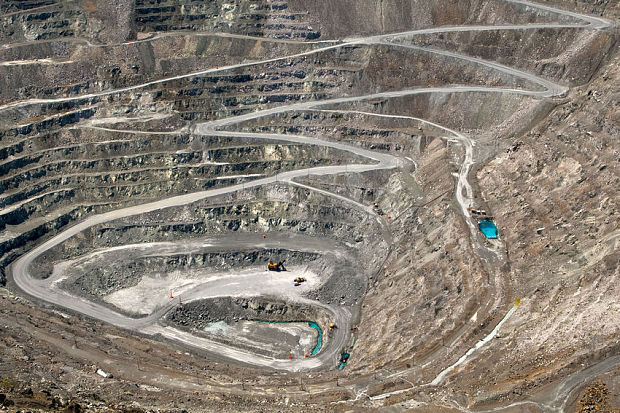 Like numerous other businesses across the country, a small, long-established Hertfordshire building firm has been threatened with bankruptcy over events which allegedly took place 50 years ago – all because of a controversial judgment by the Supreme Court in 2011 which, as I warned at the time, was based on a disastrous scientific error. Based on no scientific evidence, the judges ruled in effect that all cases of mesothelioma, a nasty form of cancer, are caused by exposure to “asbestos”.
Like numerous other businesses across the country, a small, long-established Hertfordshire building firm has been threatened with bankruptcy over events which allegedly took place 50 years ago – all because of a controversial judgment by the Supreme Court in 2011 which, as I warned at the time, was based on a disastrous scientific error. Based on no scientific evidence, the judges ruled in effect that all cases of mesothelioma, a nasty form of cancer, are caused by exposure to “asbestos”.
Had the judges heard any proper scientific evidence, they would firstly have known that up to 25 per cent of mesotheliomas occur naturally. But they would also have learnt the vital distinction between two very different minerals which are both loosely and unscientifically known as “asbestos”.
The “blue” and “brown” forms, fibrous iron silicates, can cause potentially lethal lung damage. But 90 per cent of “asbestos products” consist of cement bonded with “white asbestos”, a magnesium silicate, the soft fibres of which soon dissolve in the lungs and cannot cause mesothelioma.
Read more

Could Sheldon Silver’s arrest help clean up the New York tort racket?
The corruption charges against former New York Assembly Speaker Sheldon Silver have exposed the rotten links between politicians and trial lawyers, and that attention is bearing fruit. Witness the clarifying drama in New York’s asbestos court.
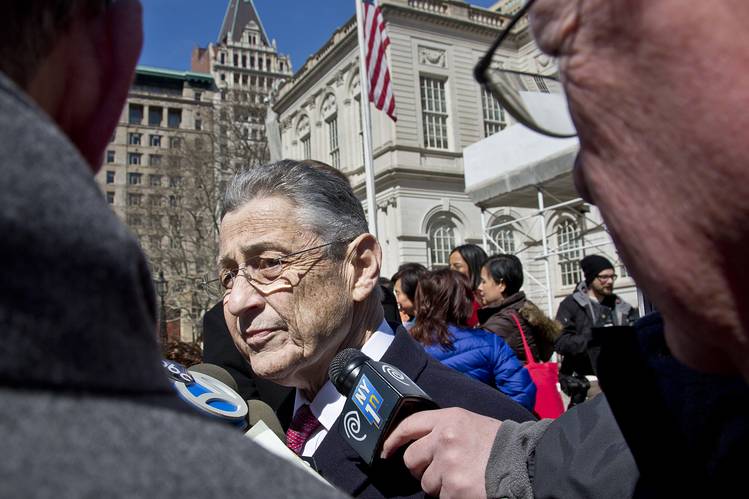 Manhattan Administrative Justice Peter Moulton recently held an unprecedented “town hall meeting” to hear complaints from dozens of defense attorneys who say New York’s asbestos docket has been rigged to favor one tort firm: Weitz & Luxenberg, the same powerhouse asbestos firm that benefited from an association with Mr. Silver.
Manhattan Administrative Justice Peter Moulton recently held an unprecedented “town hall meeting” to hear complaints from dozens of defense attorneys who say New York’s asbestos docket has been rigged to favor one tort firm: Weitz & Luxenberg, the same powerhouse asbestos firm that benefited from an association with Mr. Silver.
Read more

By Dionne Searcey, Anemona Hartocollis, Russ Buettner And David W. Chen
In the criminal complaint against Sheldon Silver, he is identified simply as “Doctor1.”
But Dr. Robert N. Taub, who headed a Columbia University center dedicated to curing a rare form of cancer caused by asbestos, is no ordinary doctor.
With a reputation as a devoted clinician intent on trying out innovative therapies, Dr. Taub is something of a hero in the world of mesothelioma, a devastating cancer that is nearly always fatal. Specializing in abdominal cases, a particularly horrific form of the disease, Dr. Taub, 78, attracted lastchance patients from across the country and the world.
The balding, bowtied oncologist would then seem to be the unlikeliest of candidates to become caught up in a criminal scheme that may lead to the downfall of Mr. Silver, the longtime speaker of the New York State Assembly and one of the state’s most powerful politicians.
Read more

House Speaker John Boehner says asbestos legal reform is a priority in the New Year, and it can’t come soon enough. Based on the details emerging from federal bankruptcy court, asbestos litigation fraud has reached new heights.
Garlock Sealing Technologies is a maker of gaskets that since its bankruptcy in 2010 has become a symbol of the corrupt practices of the plaintiffs bar. Lawyers demanded $1.3 billion in payouts from Garlock for mesothelioma patients until federal Judge George Hodges reviewed evidence showing that many of the claims were a sham. The judge in January slashed the company’s liability to $125 million and slammed the trial bar for «misrepresenting» the facts.
Then in October he moved to unseal that evidence, and now we’re getting a glimpse of what has become a widespread tort-bar con. Court documents show the ugly specifics of «double-dipping» — in which lawyers sue a company and claim its products caused their clients’ disease, even as they file claims with asbestos trusts blaming other products for the harm. This lets them get double or multiple payouts for a single illness, with a huge cut for the lawyers each time.
Read more

Nov. 6 — Brazil-based Eternit issued the following news release:
Eternit S.A. (BM&FBOVESPA;:ETER3;OTC:ETNTY) announces its results for the 3Q14.
Demand for construction materials increased slightly in the third quarter compared to previous quarters, according to data from the Brazilian Association of Construction Materials Industry (ABRAMAT) which, however, was not sufficient to recover from the sharp decline in sales in the first half of the year. Eternit significantly outperformed the construction materials sector, with its chrysotile mining segment operating at full capacity, while in the finished products line, production of fiber-cement and concrete tiles kept pace with demand.
Chrysotile mineral volume sold in 3Q14 was 71,600 tons, practically stable (down 1.0%) compared to 3Q13. In the same period, fiber-cement sales, including construction solutions, reached 232,800 tons, increasing 7.5% from 3Q13, whereas concrete roofing tile sales decreased 10.9%, mainly due to the lower demand in the high-end roofing segment, especially in the B2C (business-to-consumer) and building companies segments.
Read more

When it comes to the selective use of scientific data to come up with unscientific policies, Europe is a world leader. A growing danger for the global economy is that the EU is trying to get the world to follow its lead on important regulatory matters.
The latest case concerns asbestos. Amphibole asbestos, one of the two broad types of the naturally occurring substance, has been generally regarded as a carcinogen and widely banned for three decades now. But only the European Union and a dozen or so other countries have banned the other type of asbestos, chrysotile. Also known as white asbestos,chrysotile remains a $600 million-a-year industry that thrives especially in Russia, China, Canada and Brazil.
That could change soon. At a five-day conference beginning tomorrow in Lyon, the U.N.’s International Agency for Research on Cancer (IARC) will review a study of various synthetic chrysotile substitutes to determine whether they are safer than the real thing. In making such a comparison, one might expect the new information on the synthetics to be weighed alongside the most up-to-date data available on chrysotile itself. Yet under IARC’s mandate for the study, handed down by the World Health Organization, no new analysis of chrysotile was ordered.
Read more


Federal bankruptcy Judge George Hodges in February took a bold step against asbestos litigation fraud, and the good deeds continue. The North Carolina jurist has decided to unseal all the evidence in his high-profile asbestos case.
Asbestos claims drove gasket-maker Garlock Sealing Technologies into bankruptcy in 2010, and the tort bar demanded the company hand over $1.3 billion. Judge Hodges allowed for discovery into some of the claims and issued an opinion skewering the plaintiffs’ lawyers for a “startling pattern of misrepresentation.” He detailed how the tort bar was essentially double-dipping—filing claims with outside asbestos trusts in which they blamed non-Garlock products for their diseases, even as they blamed Garlock in court.
Read more


The worst public scandals are often those that travel in plain sight, and a prime example is the asbestos litigation racket. We’ve been writing about it for years, and now a judge in North Carolina has issued a remarkable opinion exposing just how rotten it is.
The case involves Garlock Sealing Technologies, a gasket maker forced into bankruptcy in 2010 by a flood of bogus claims. Plaintiffs lawyers were insisting that Garlock set aside $1.3 billion for victims of the deadly asbestos-related disease, mesothelioma. Last month federal bankruptcy judge George Hodges instead accepted Garlock’s liability estimate of $125 million and roasted the plaintiffs bar for dishonesty.
Read more


Yesterday saw the launch of yet another scare campaign.
As so often before championed by the BBC, it warned us again of the deadly dangers posed by asbestos — this time in Britain’s schools.
In the past 30 years, it was claimed on Radio 4’s Today programme, 178 teachers have died of asbestos-related diseases — and their numbers are rising all the time.
Steps must be taken to protect pupils and teachers from asbestos in schools, a new study has warned.
Read more

In May, Carolyn McCarthy, a nine-term congresswoman from Long Island, was diagnosed with lung cancer. Her treatment began almost immediately, causing her to take a lengthy absence from her office while she fought the disease. At the same time, McCarthy, 69, ended a pack-a-day cigarette habit that she’d had for most of her life, presumably because she understood the link between cigarette-smoking and lung cancer. Scientists estimate that smoking plays a role in 90 percent of lung cancer deaths.
“Since my diagnosis with lung cancer,” she wrote in a recent legal filing, “I have had mental and emotional distress and inconvenience. I am fearful of death.” She added, “My asbestos-related condition has disrupted my life, limiting me in my everyday activities and interfering with living a normal life.”
Asbestos-related?
Yes, that’s right. It’s hard these days for smokers to sue tobacco companies because everyone knows the dangers of cigarettes. Instead, McCarthy has become part of a growing trend: lung cancer victims who are suing companies that once used asbestos.
Read more


Six weeks ago, I wrote a column about a ridiculous lawsuit being brought by Carolyn McCarthy, a congresswoman from Long Island. A smoker for most of her life, McCarthy has lung cancer. Yet her lawyers claimed that it was her “exposure” to asbestos, through the work clothes of her father and brother, both boilermakers, that triggered her cancer. Though McCarthy certainly deserves our sympathy as she fights cancer, it is hard to see her lawsuit as anything but an undeserved money grab — and the latest twist in asbestos litigation, the longest running tort in American history, with no end in sight.
Then again, maybe there is finally an end in sight. Late Friday afternoon, Judge George Hodges, a federal bankruptcy judge in North Carolina, wrote a breathtaking decision, in which he essentially pulled the lid off another form of asbestos scam. Though he shrank from labeling the actions of the plaintiffs’ lawyers involved in asbestos litigation as “fraudulent,” he did describe the litigation as “infected with the impropriety of some law firms.” It’s a potential game-changer.
Read more


Assembly Speaker Sheldon Silver’s law firm has filed a class-action suit on behalf of Rep. Carolyn McCarthy, accusing more than 70 companies of potentially causing the Long Island congresswoman to develop lung cancer from asbestos.
But the bizarre Weitz & Luxenberg suit fails to mention that the 69-year-old Democrat smoked heavily for 40 years — and that she never actually worked with the cancer-causing substance.
Instead, McCarthy’s attorney, Daniel Blouin, claims she came in contact with asbestos in her youth when her father and brothers worked as boiler makers in Navy yards and powerhouses.
He says toxic fibers attached to their clothing.
Read more

Q&A: What’s the Asbestos Risk Today?
Three decades after Manville Corp. collapsed under an avalanche of asbestos litigation, personal-injury claims continue to pile up at a rate of 85 per day.
They find their way to a small office building in suburban Virginia, where processors evaluate the paperwork of pipe fitters and welders and shipbuilders who say they contracted debilitating lung diseases from the company’s insulation products. By last March, a Manville bankruptcy trust had already paid out nearly $4.3 billion.
So when a beneficiary of one David E. Knight came to the trust saying the former seaman had succumbed to the deadly cancer mesothelioma, the administrators didn’t blink. Within five weeks, the claimant received a check for $26,250.
Read more

Fraudulent claims for asbestos exposure are shortchanging companies and legitimate victims, former judge and McCarter & English attorney Peggy L. Ableman testified today in support of legislation aimed at curtailing false claims on an estimated $30 billion in assets.
Under the current system, people claiming harm from asbestos can seek damages from trusts set up by bankrupt companies and simultaneously sue non-bankrupt companies, using inconsistent information about how and when they were exposed, Ableman said in a hearing before the U.S. House of Representatives Subcommittee on Regulatory Reform, Commercial and Antitrust Law today.
Companies are “often led to believe — erroneously — that their products were far more responsible for the plaintiff’s disease than what may have been the case, because they have no way of knowing the substance of an individual plaintiff’s claims,” Ableman said.
Read more

EDWARDSVILLE, Ill. (Legal Newsline) – A recent ruling by a bankruptcy judge that exposed “double dipping” has an attorney in the nation’s asbestos litigation epicenter calling for more transparency between the two systems set up to compensate people sickened by asbestos.
“The real issue for me is whether the courts will require claimants to file trust forms before trial,” said Brian Huelsmann of HeplerBroom in Edwardsville, Ill. “What defendants are looking for is more transparency with trust filings.”
Huelsmann was reacting to a decision out of the Western District of North Carolina, in which U.S. District Judge George Hodges found a “startling pattern of misrepresentation” by plaintiffs’ attorneys in manipulating evidence of exposure as it pursued Garlock Sealing Technologies, first in court and then in bankruptcy proceedings.
Plaintiffs wanted to settle Garlock’s liability in bankruptcy for up to $1.3 billion; Garlock valued its liability at $125 million. Hodges found Garlock’s figure to be a reliable estimation.
Read more


DOVER, Del. (Legal Newsline) – The Delaware Supreme Court has found in favor of a talc manufacturer in an asbestos case, concluding that the lower court erred when it failed to grant a new trial after witnesses made derogatory statements during testimony.
Justice Henry duPont Ridgely delivered the July 24 opinion with justices Leo E. Strine and Randy J. Holland concurring.
Ridgely concluded that defendant RT Vanderbilt Company Inc. should have been granted a new trial and reversed the Superior Court’s judgment.
Vanderbilt appealed after a jury in the lower court found the defendant 100 percent liable and entered a verdict in favor of plaintiff Darcel Galliher, individually and on behalf of the estate of Michael Galliher, awarding her $2,864,583 plus interest.
Read more

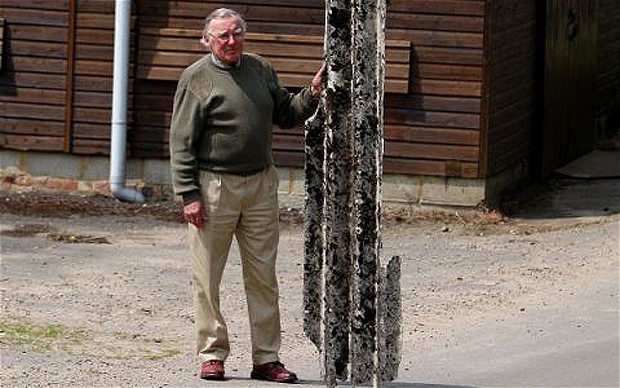
A legal challenge is being mounted to the new asbestos regulations.
What is the most outrageous Government-supported scam in Britain today? Obviously there are a number of contenders. One is the Public Finance Initiative (PFI) whereby we pay private contractors up to three times the value of the hospitals and such that they build. Another is the Great Wind Scam, whereby we pour billions of pounds into the wind industry, to supply us, very unreliably, with derisory amounts of electricity. But there is shortly to be a legal challenge to another hugely costly scam – or part of it, at least – based on the way powerful lobby groups have managed to hijack government policy on the emotive and widely misrepresented subject of asbestos.
On behalf of some 50,000 farmers, and supported by the National Farmers’ Union, Bryan Edgley, who farms 2,500 acres in Buckinghamshire, is asking the High Court to declare unlawful a new set of asbestos regulations which, his lawyers will claim, are wholly unworkable, not based on proper science and could present farmers with a quite unnecessary bill for £6 billion.
Read more


The Government’s chief scientific adviser, Prof Sir John Beddington, has given the green light to the white asbestos scam, says Christopher Booker.
An all-too-familiar trick when the establishment faces awkward questions on some controversial matter is to set up a committee packed with people who can be relied on to avoid the real points at issue and come up with the answer it wants. The Climategate inquiries were all examples of this technique. Another was the recent inquiry, headed by the Government’s chief scientific adviser, Sir John Beddington, into the claim that thousands of people die every year from exposure to white asbestos. This scare story, which not only defies all the best scientific evidence but also the earlier findings of the Government’s own advisers, has become the basis for rackets costing hundreds of millions of pounds a year in bogus insurance claims and fraudulent contractors’ charges for work which is unnecessary.
Read more
















 According to the Republican presidential nominee, the anti-asbestos movement is a conspiracy rigged by the mob. Yes, the mob.
According to the Republican presidential nominee, the anti-asbestos movement is a conspiracy rigged by the mob. Yes, the mob.


 A ceremonial meeting of the International Alliance of Trade Union Organizations «Chrysotile» was held on the premises of the Federation of Independent Trade Unions of Russia, Moscow. The representatives of countries — members of the alliance (trade union leaders, scientists and medical professionals) took part in the event.
A ceremonial meeting of the International Alliance of Trade Union Organizations «Chrysotile» was held on the premises of the Federation of Independent Trade Unions of Russia, Moscow. The representatives of countries — members of the alliance (trade union leaders, scientists and medical professionals) took part in the event.


 A year after his corruption conviction, ex-Assembly Speaker Sheldon Silver’s influence is still harming our courts.
A year after his corruption conviction, ex-Assembly Speaker Sheldon Silver’s influence is still harming our courts. New York has cut a worm out of the Big Apple with the conviction of corrupt former Assembly Speaker Sheldon Silver, but its courts are still rotten to the core when it comes to asbestos litigation, according to a new report.
New York has cut a worm out of the Big Apple with the conviction of corrupt former Assembly Speaker Sheldon Silver, but its courts are still rotten to the core when it comes to asbestos litigation, according to a new report.








 Utah’s attorney general is suing four asbestos-related trusts, including the Armstrong World Industries Inc. Asbestos Personal Injury Settlement Trust, in search of information about whether the trusts are doing enough to prevent fraudulent claims.
Utah’s attorney general is suing four asbestos-related trusts, including the Armstrong World Industries Inc. Asbestos Personal Injury Settlement Trust, in search of information about whether the trusts are doing enough to prevent fraudulent claims.

 — Residents of Asbest and the International Trade Unions Movement «For Chrysotile» organized an event to draw attention to the problems of the chrysotile industry
— Residents of Asbest and the International Trade Unions Movement «For Chrysotile» organized an event to draw attention to the problems of the chrysotile industry


 A lack of transparency between the asbestos bankruptcy trust system and the courts can lead to inflated recoveries for claimants and their lawyers, a problem that’s not only unfair to solvent companies but to future claimants as well, according to a report released today by the Illinois Civil Justice League (ICJL).
A lack of transparency between the asbestos bankruptcy trust system and the courts can lead to inflated recoveries for claimants and their lawyers, a problem that’s not only unfair to solvent companies but to future claimants as well, according to a report released today by the Illinois Civil Justice League (ICJL).



 Asbestos trust funds set up to provide financial support for people suffering from asbestos-related illnesses are being sapped by bogus claims and frivolous lawsuits. The same shady cash grabs that are taking money from deserving asbestos victims are also threatening businesses like mine.
Asbestos trust funds set up to provide financial support for people suffering from asbestos-related illnesses are being sapped by bogus claims and frivolous lawsuits. The same shady cash grabs that are taking money from deserving asbestos victims are also threatening businesses like mine.
 There was no single cause of the tragic 24-story Grenfell Tower conflagration in London. The British newspaper
There was no single cause of the tragic 24-story Grenfell Tower conflagration in London. The British newspaper 



 A California jury on Thursday ruled in favor of Johnson & Johnson in a lawsuit by a woman who said she developed the cancer mesothelioma after being exposed to asbestos in the company’s talc-based products including J&J’s Baby Powder.
A California jury on Thursday ruled in favor of Johnson & Johnson in a lawsuit by a woman who said she developed the cancer mesothelioma after being exposed to asbestos in the company’s talc-based products including J&J’s Baby Powder.

 In the Trump administration, at least, the government will no longer look the other way as asbestos lawyers negotiate lenient terms that make it easy for their current clients to get money at the expense of future claimants and federal entitlement programs.
In the Trump administration, at least, the government will no longer look the other way as asbestos lawyers negotiate lenient terms that make it easy for their current clients to get money at the expense of future claimants and federal entitlement programs.














 Like numerous other businesses across the country, a small, long-established Hertfordshire building firm has been threatened with bankruptcy over events which allegedly took place 50 years ago – all because of a controversial judgment by the Supreme Court in 2011 which, as I warned at the time, was based on a disastrous scientific error. Based on no scientific evidence, the judges ruled in effect that all cases of mesothelioma, a nasty form of cancer, are caused by exposure to “asbestos”.
Like numerous other businesses across the country, a small, long-established Hertfordshire building firm has been threatened with bankruptcy over events which allegedly took place 50 years ago – all because of a controversial judgment by the Supreme Court in 2011 which, as I warned at the time, was based on a disastrous scientific error. Based on no scientific evidence, the judges ruled in effect that all cases of mesothelioma, a nasty form of cancer, are caused by exposure to “asbestos”.
 Manhattan Administrative Justice Peter Moulton recently held an unprecedented “town hall meeting” to hear complaints from dozens of defense attorneys who say New York’s asbestos docket has been rigged to favor one tort firm: Weitz & Luxenberg, the same powerhouse asbestos firm that benefited from an association with Mr. Silver.
Manhattan Administrative Justice Peter Moulton recently held an unprecedented “town hall meeting” to hear complaints from dozens of defense attorneys who say New York’s asbestos docket has been rigged to favor one tort firm: Weitz & Luxenberg, the same powerhouse asbestos firm that benefited from an association with Mr. Silver.










